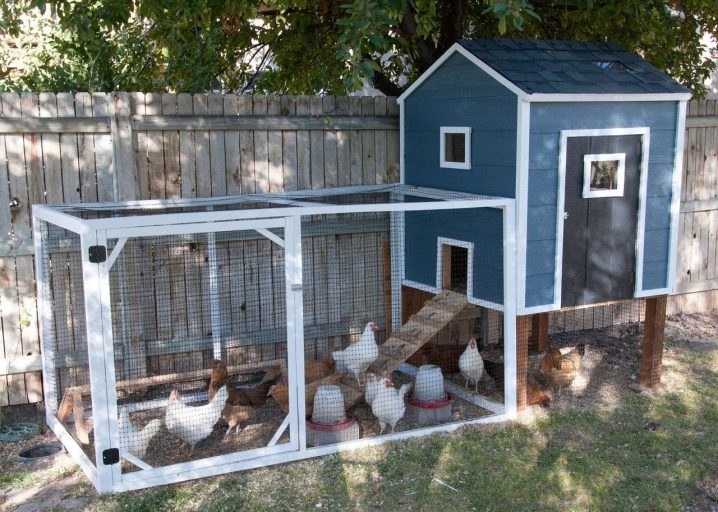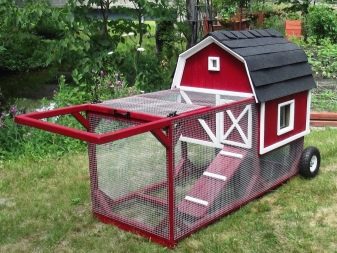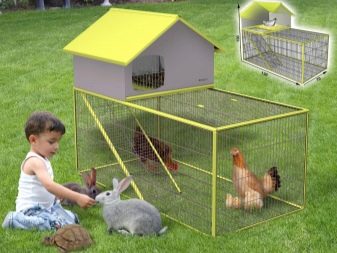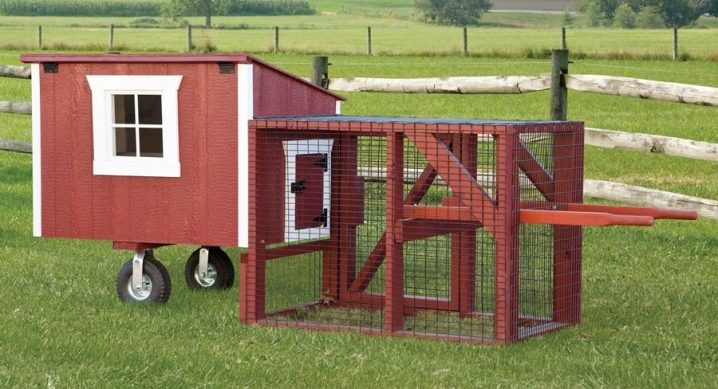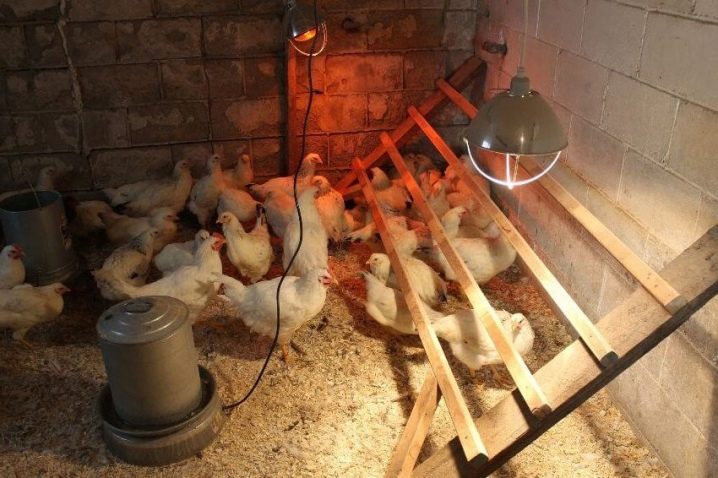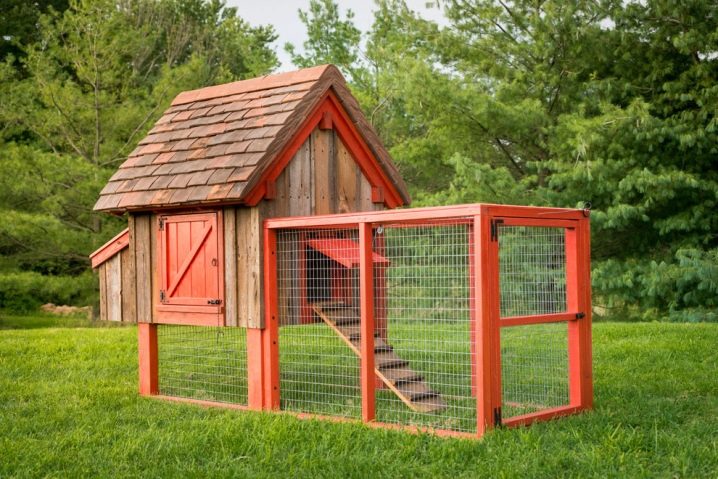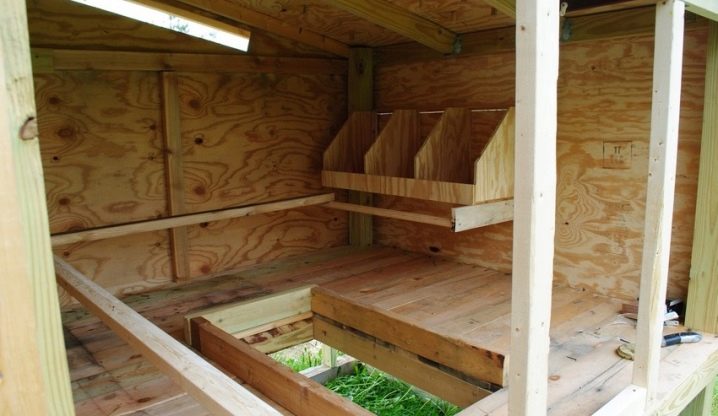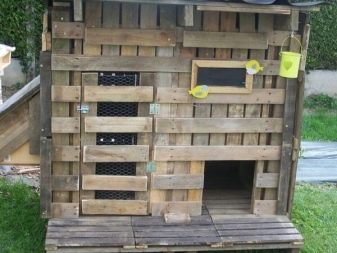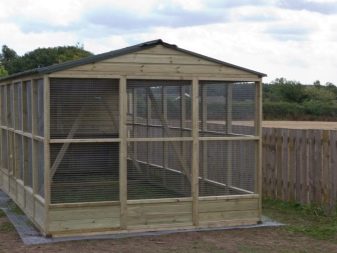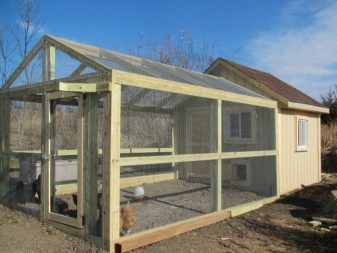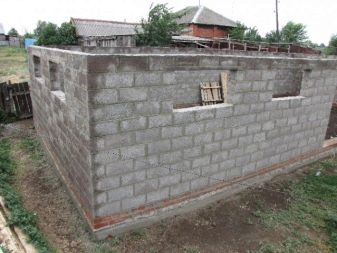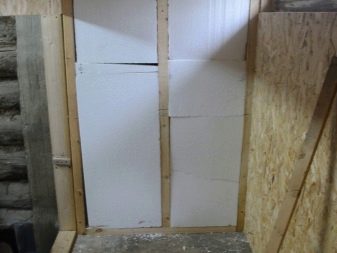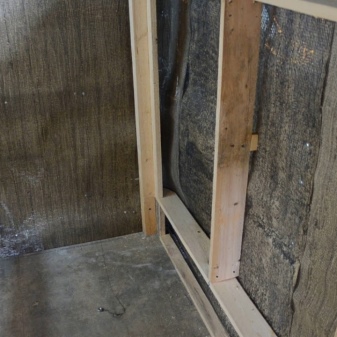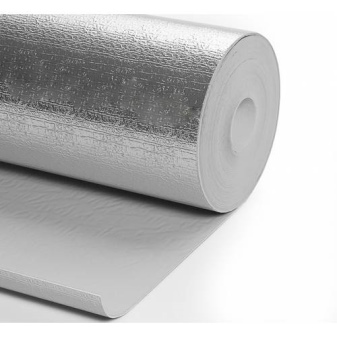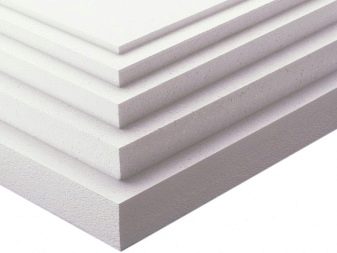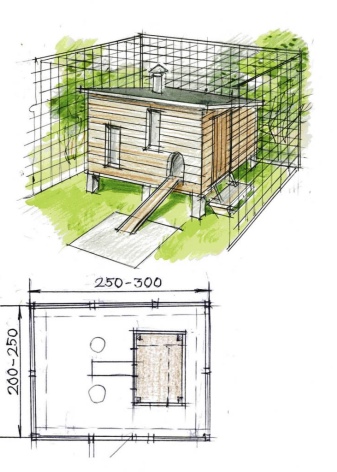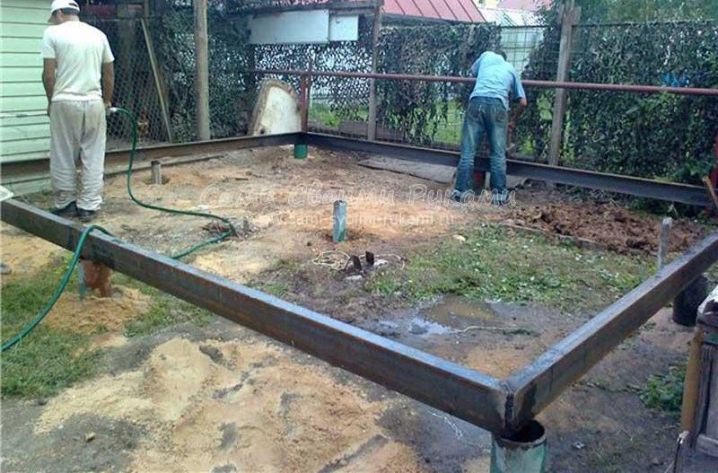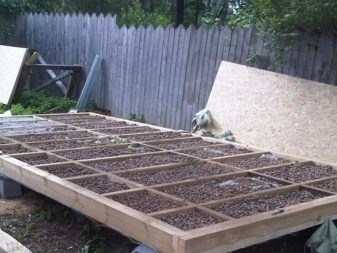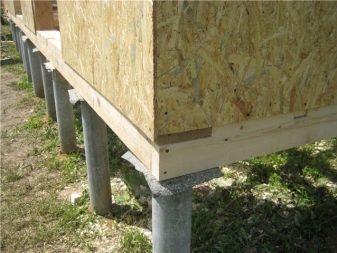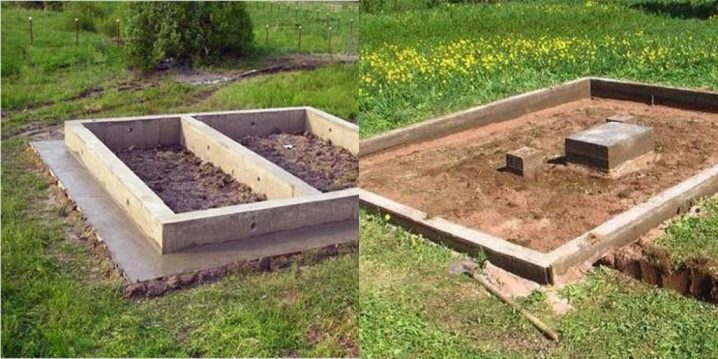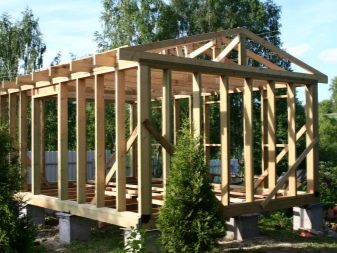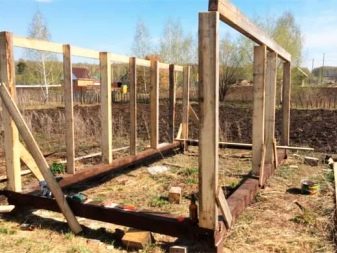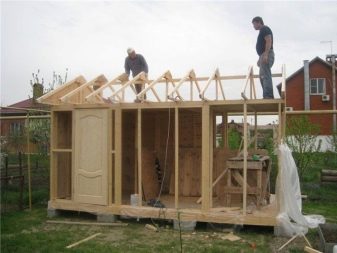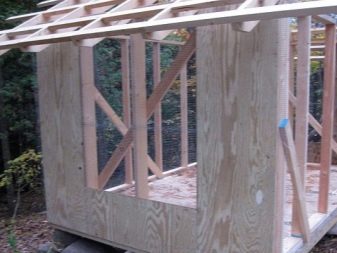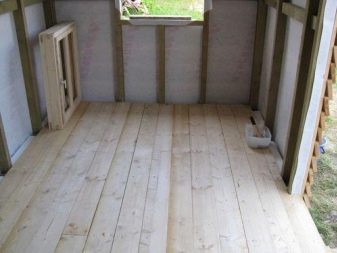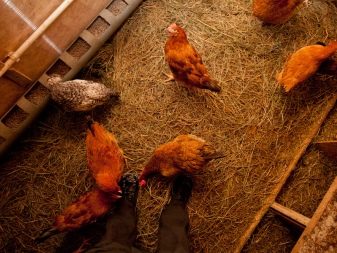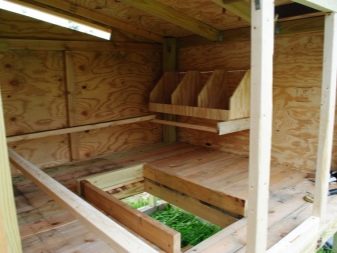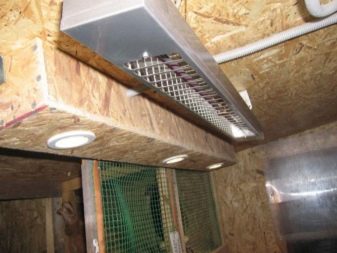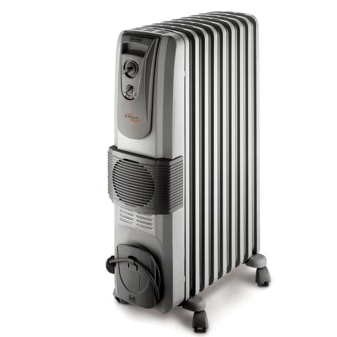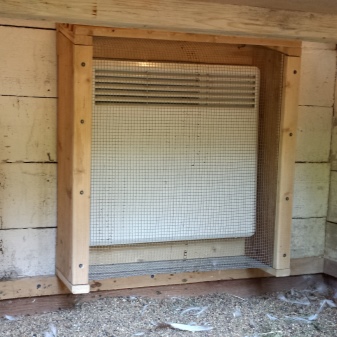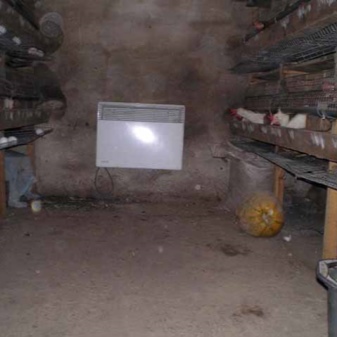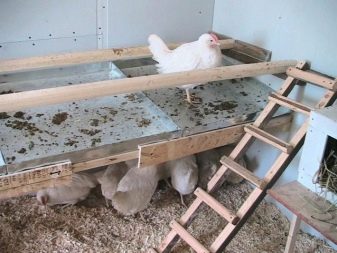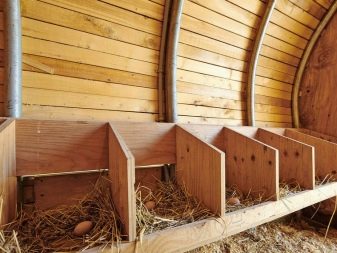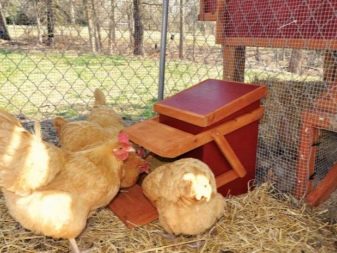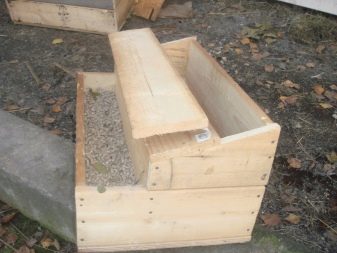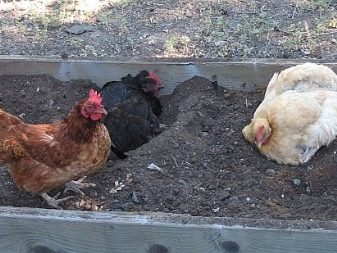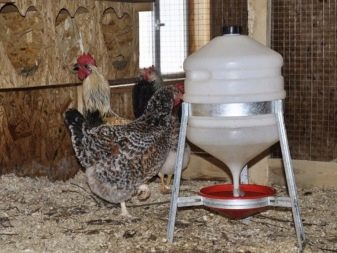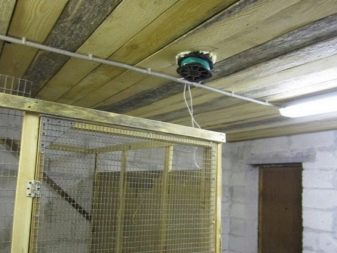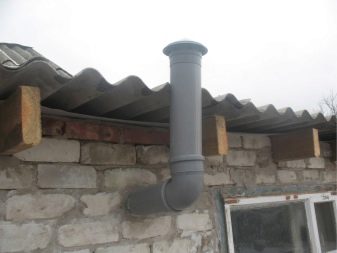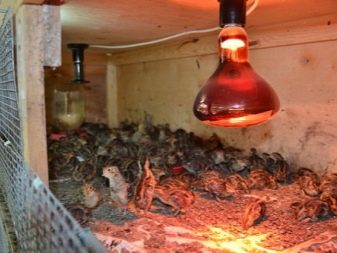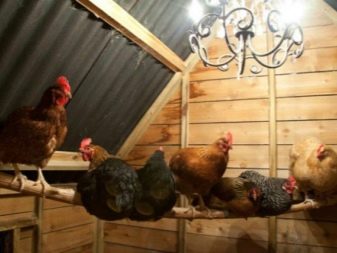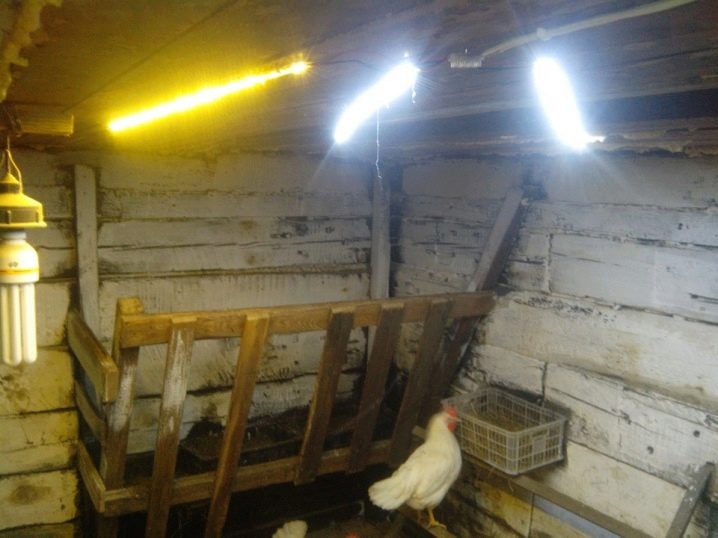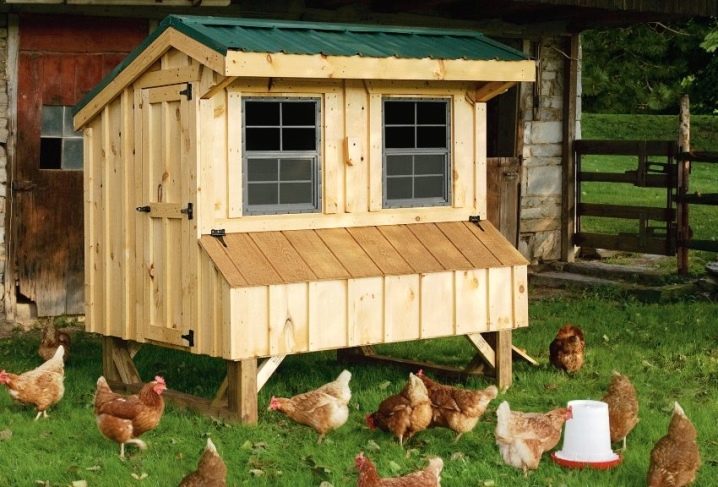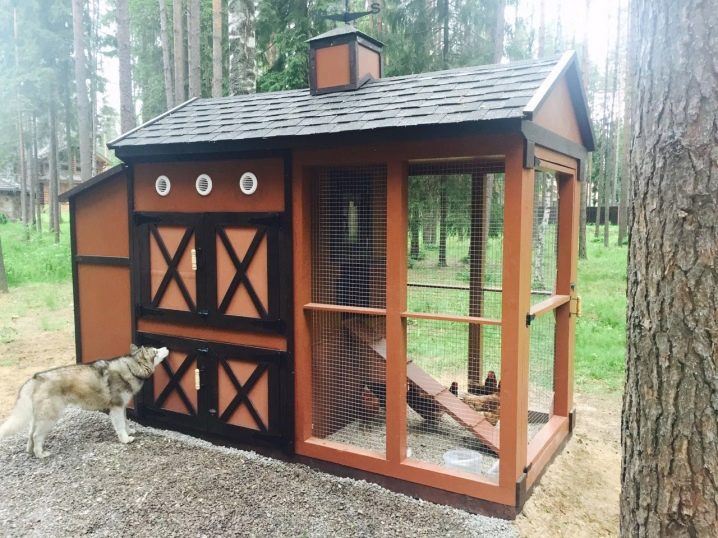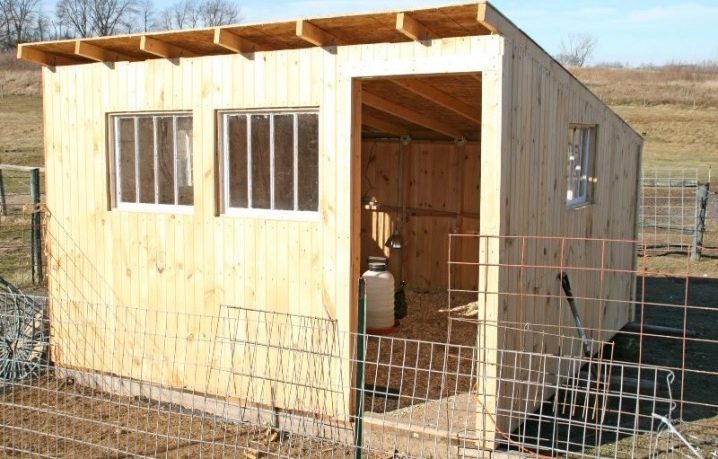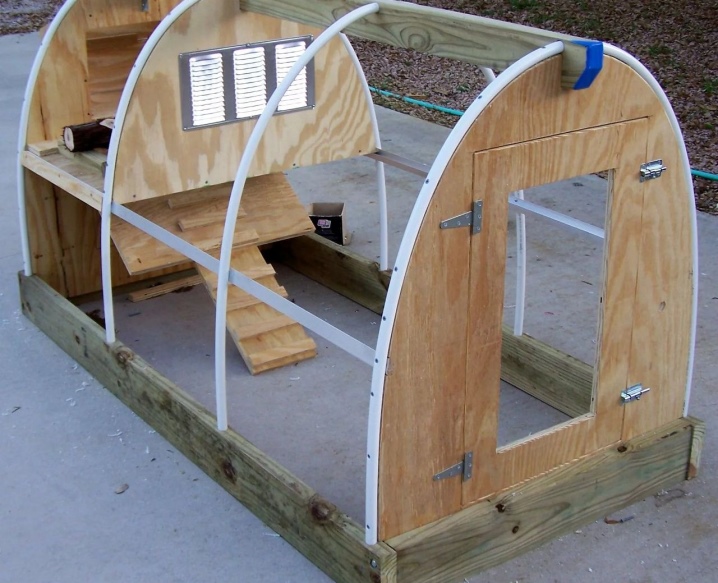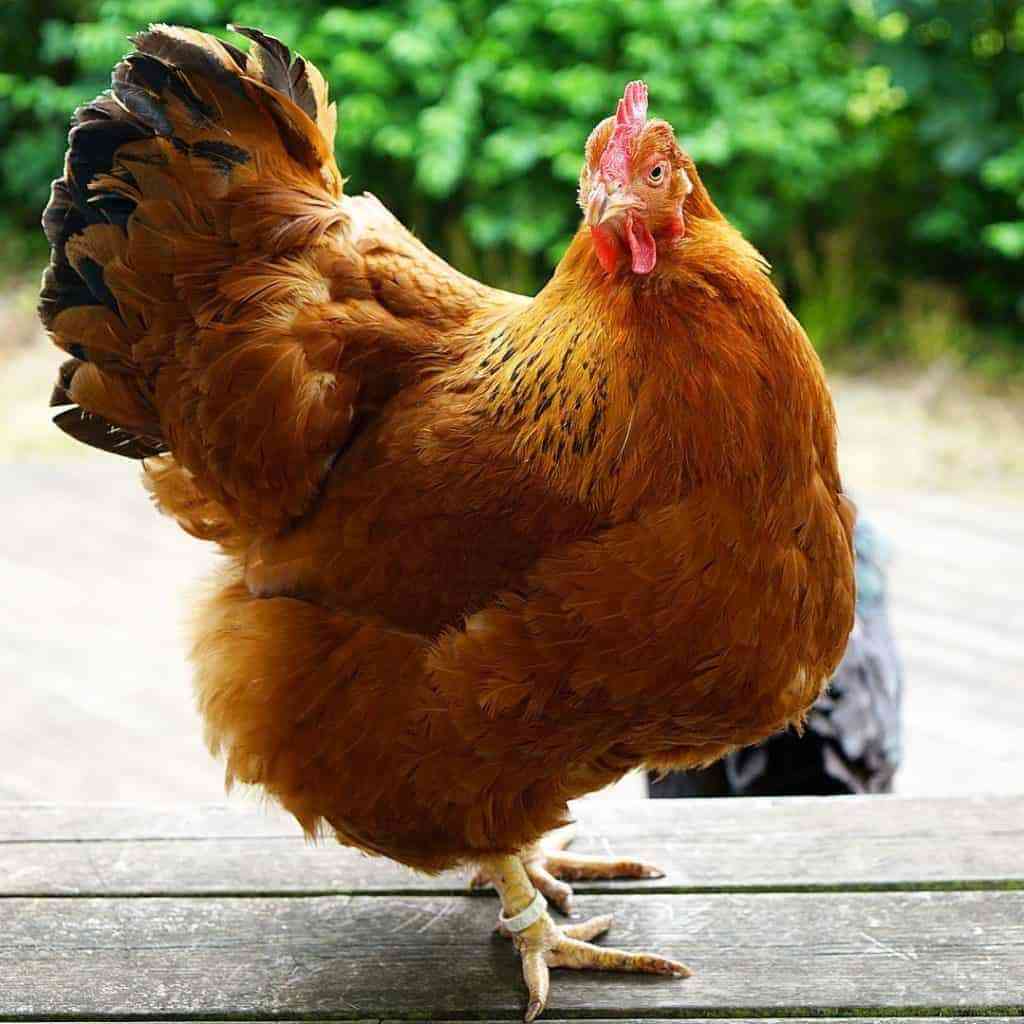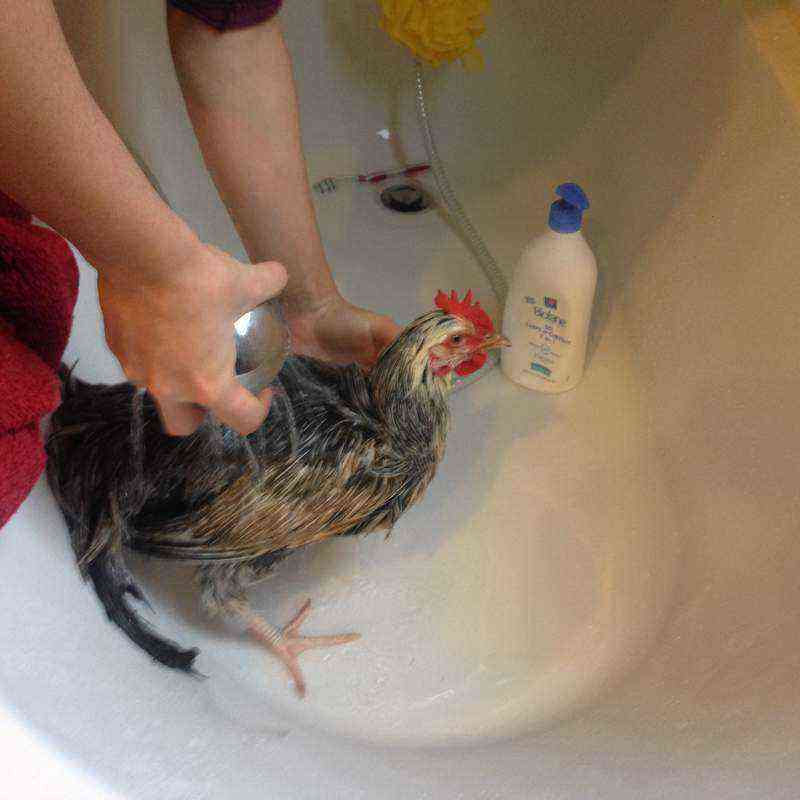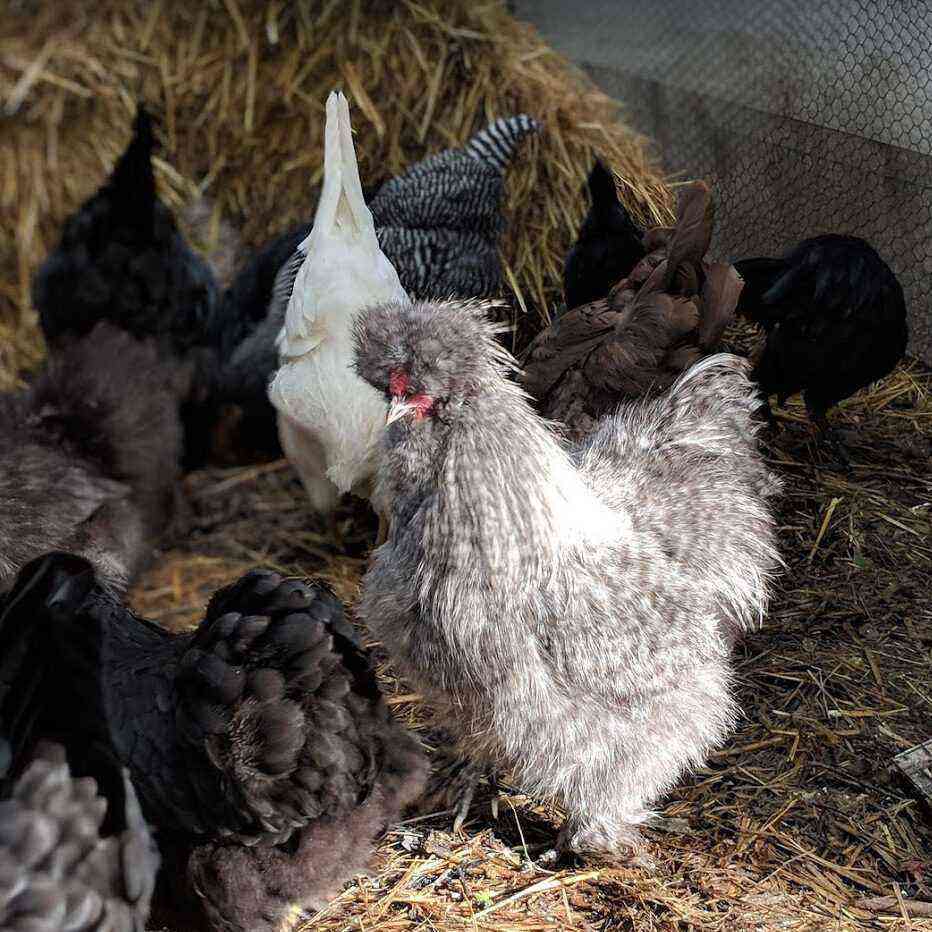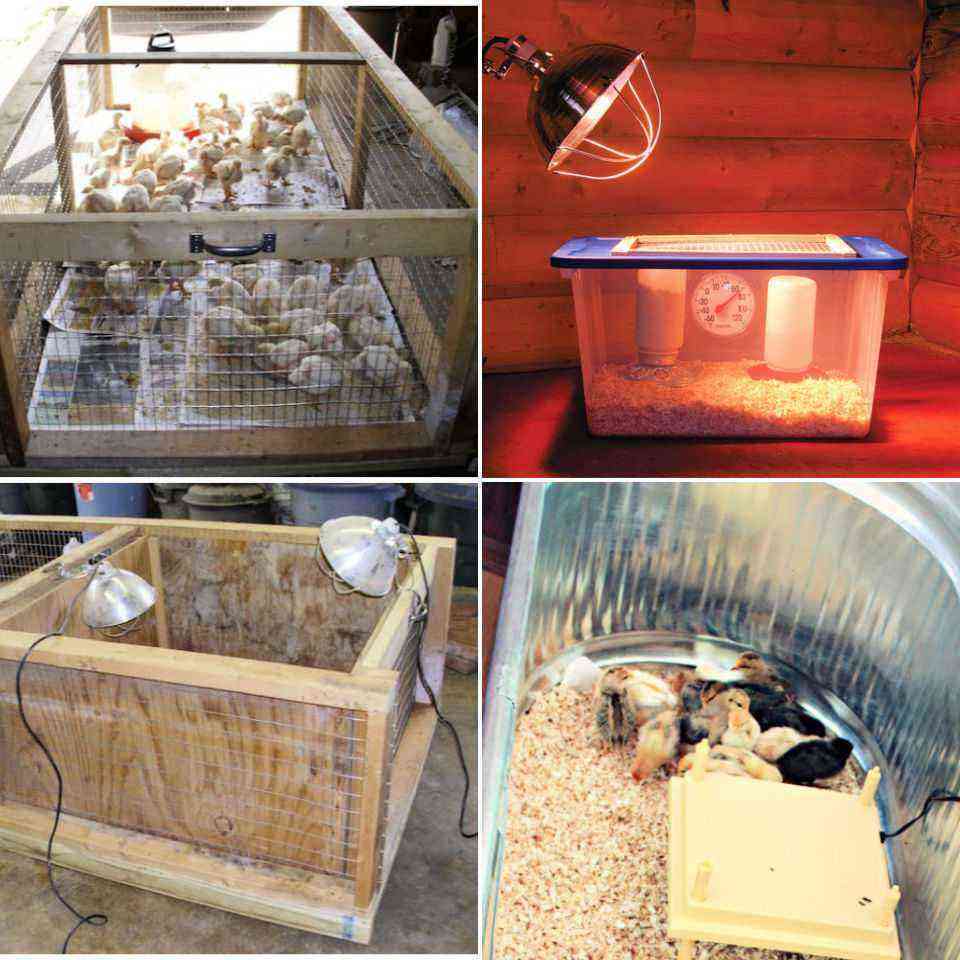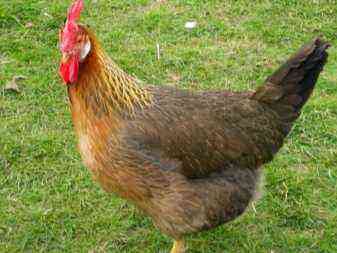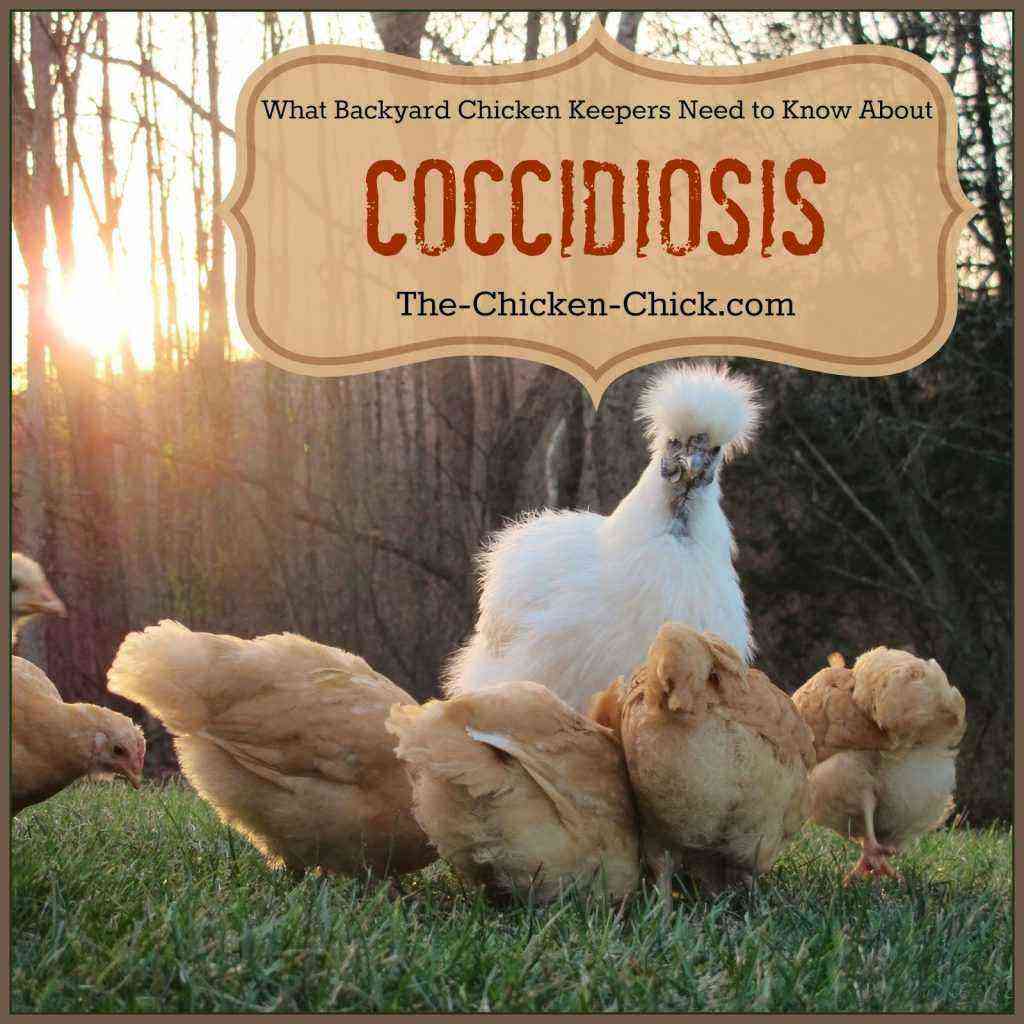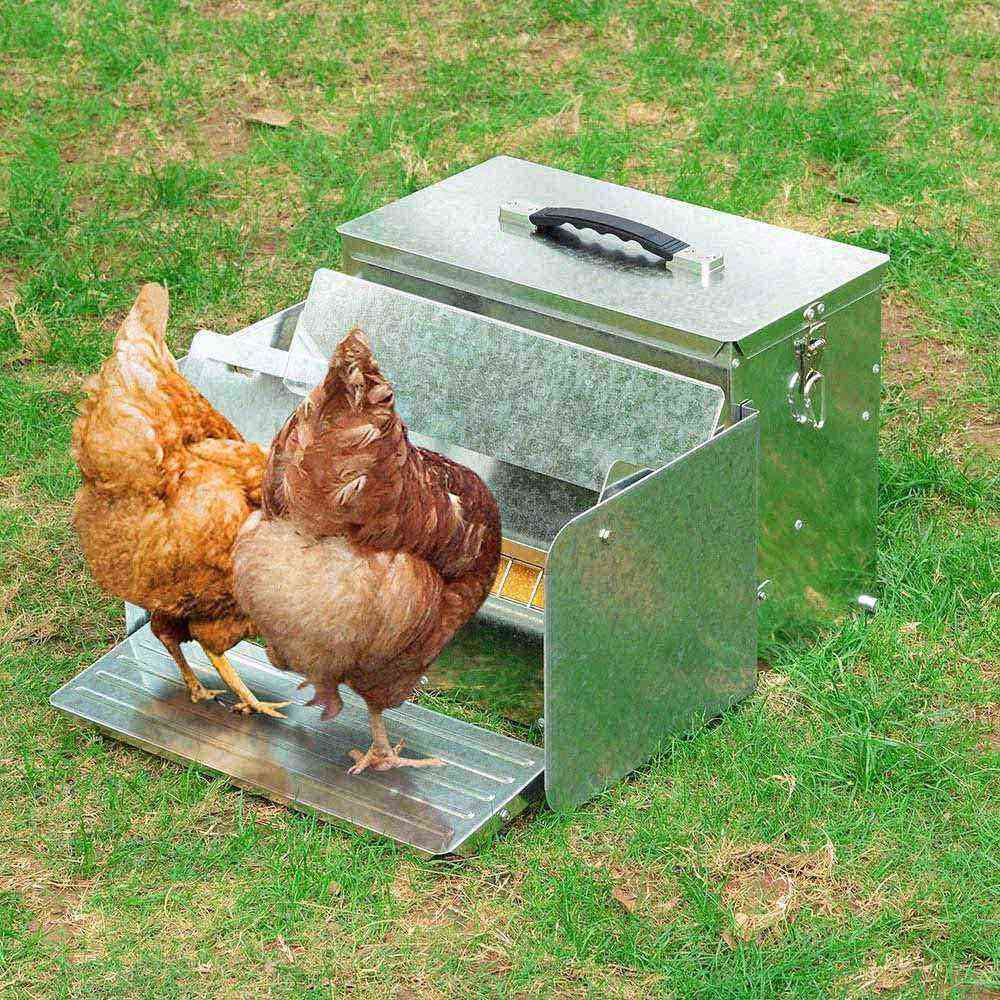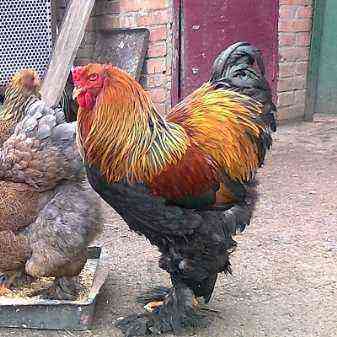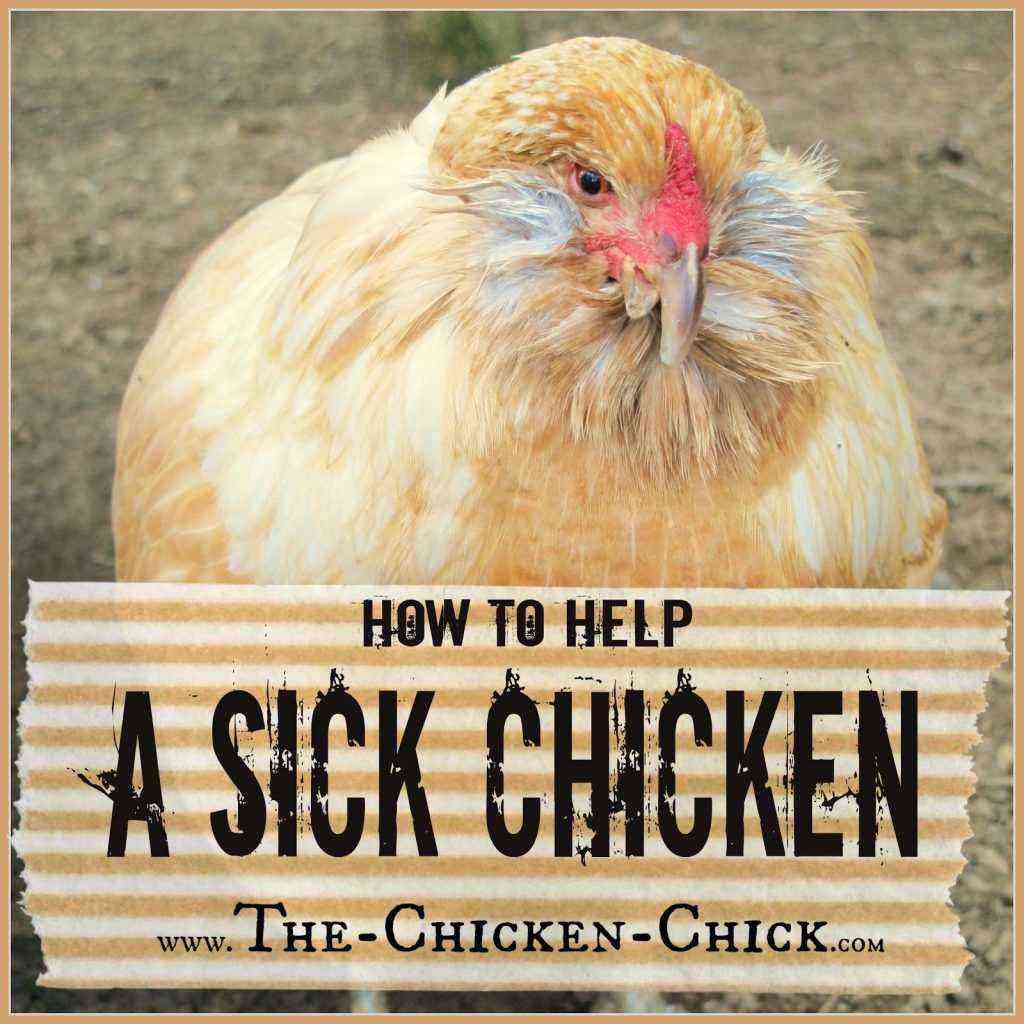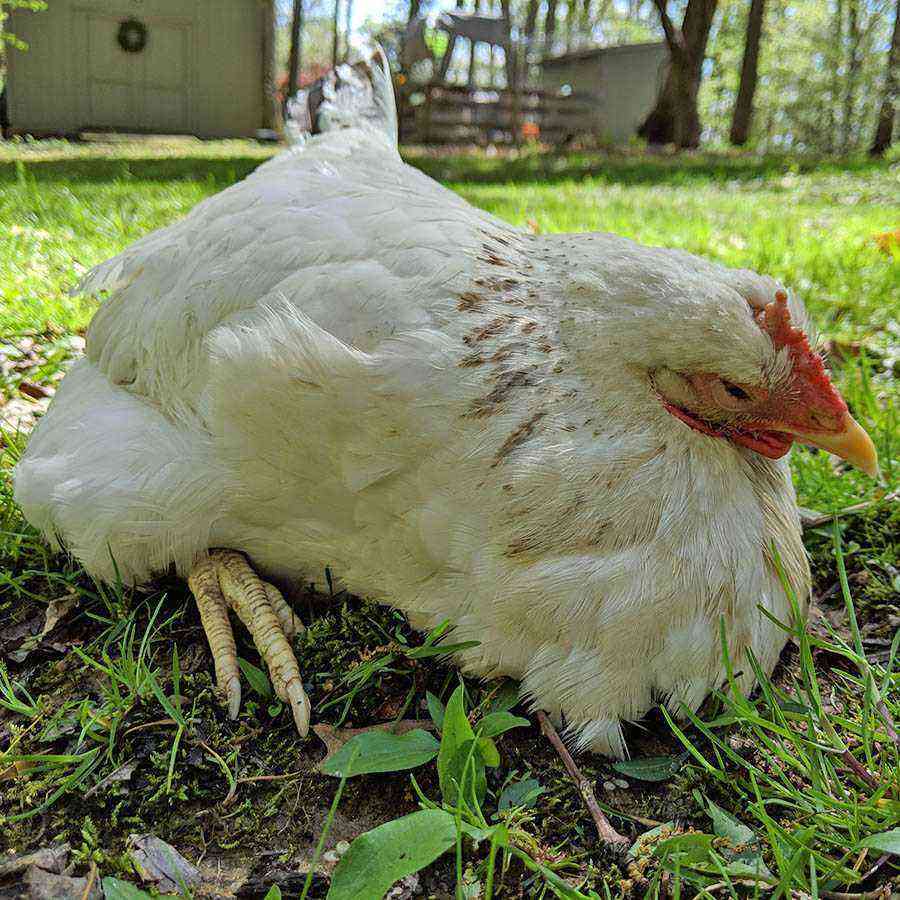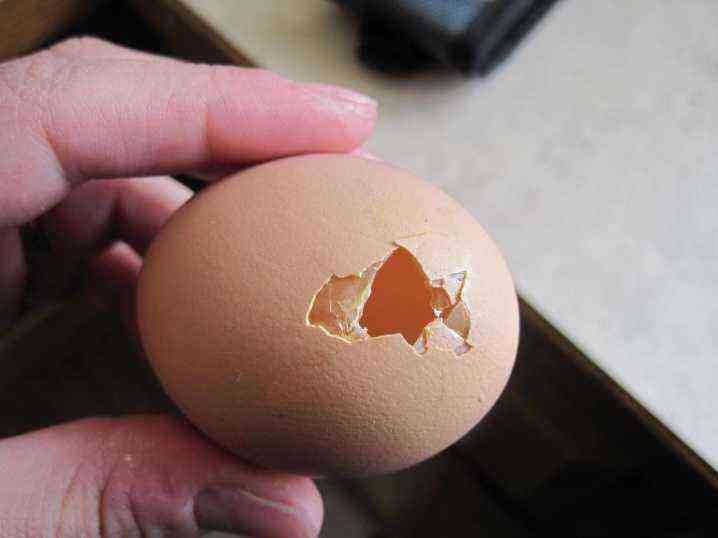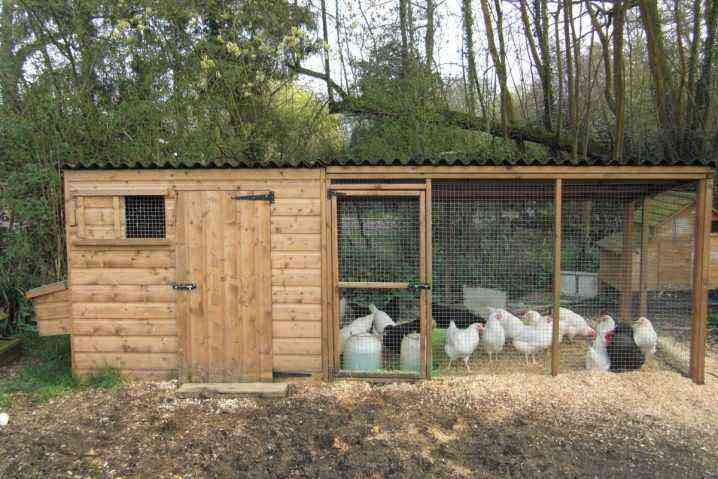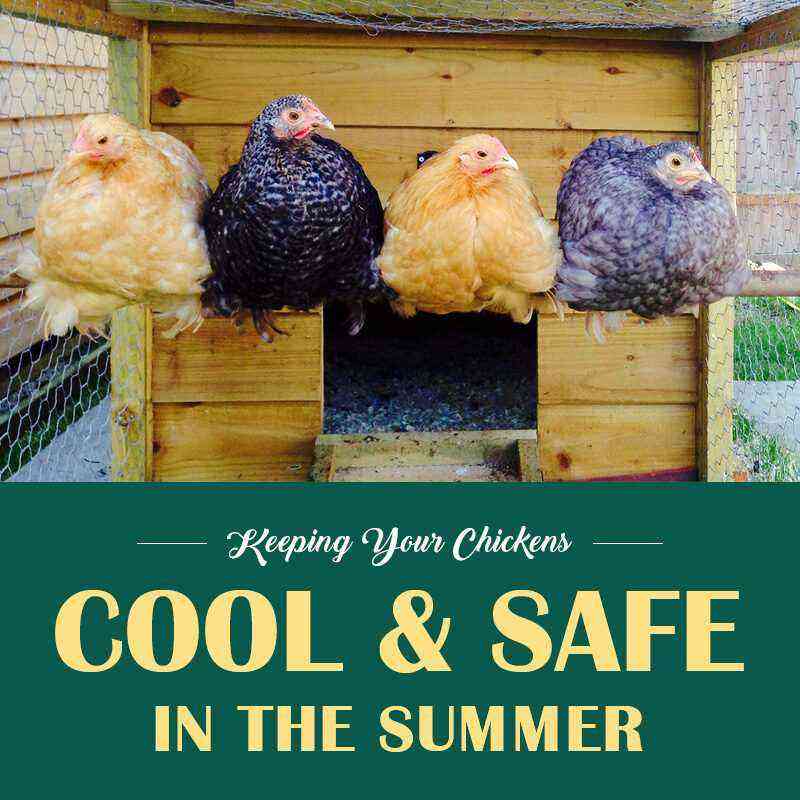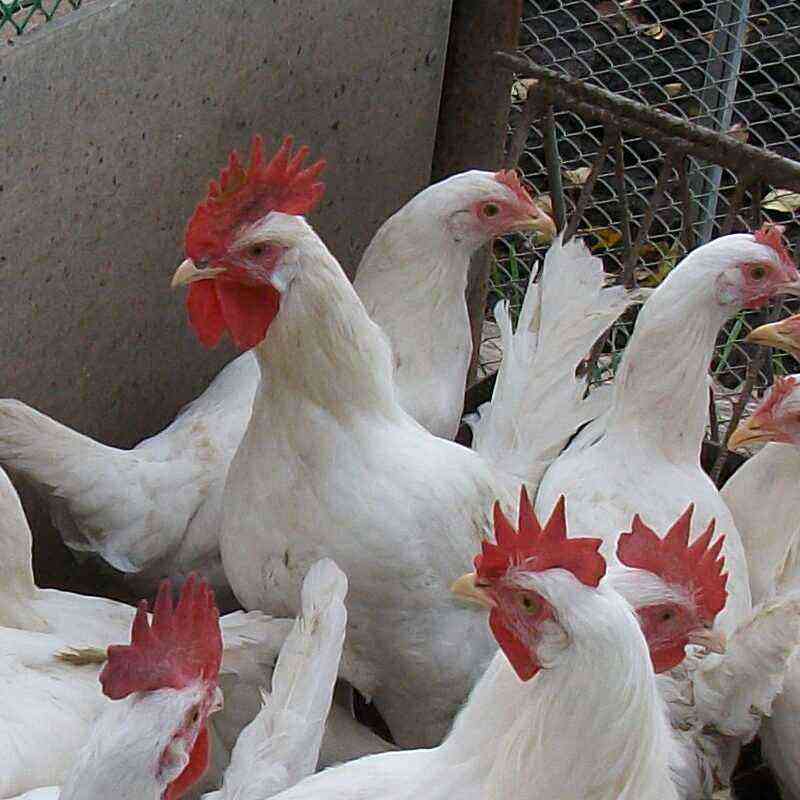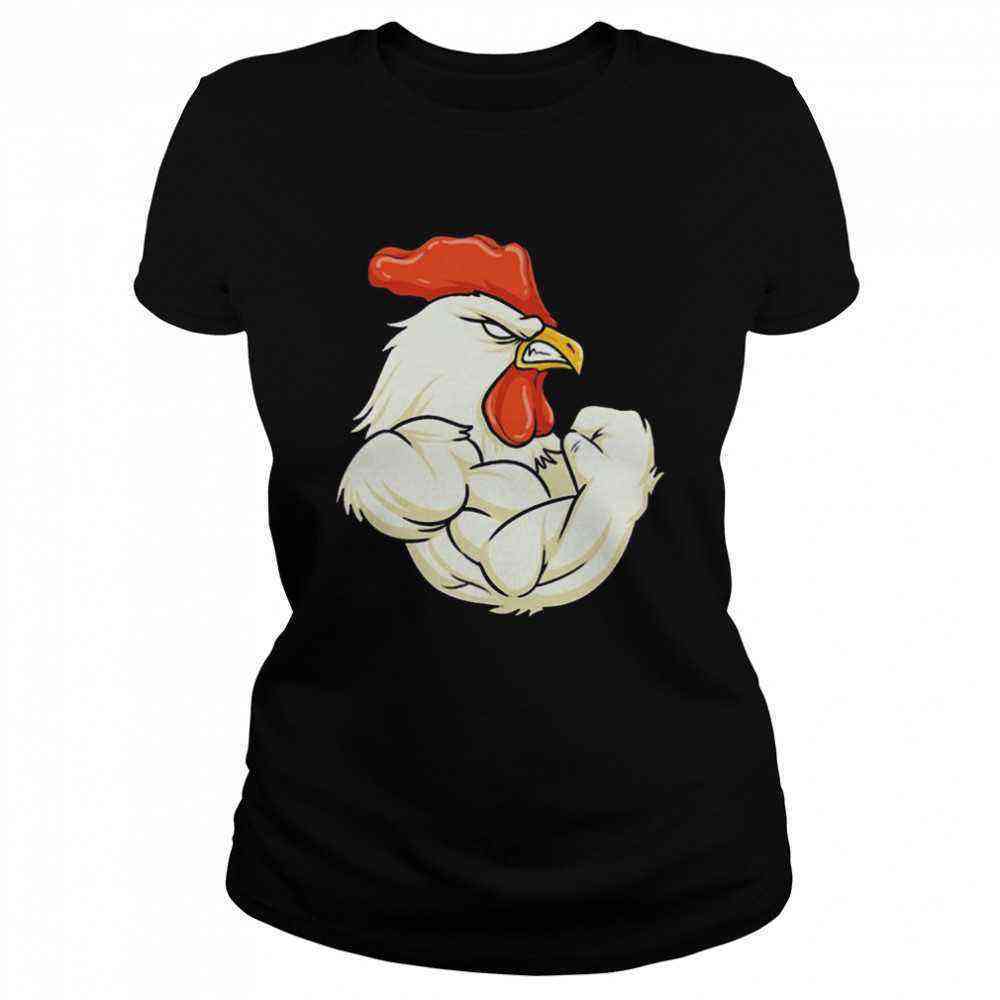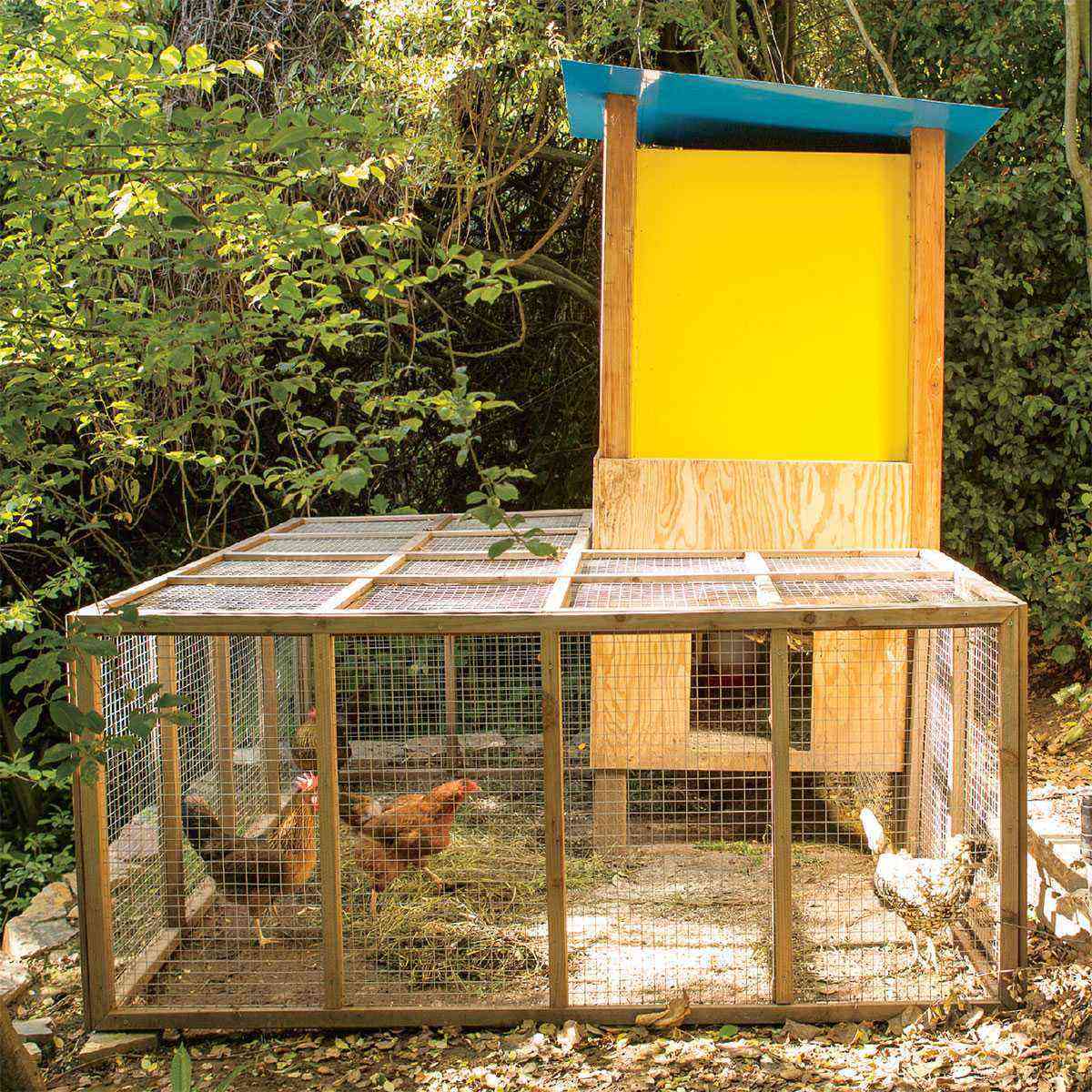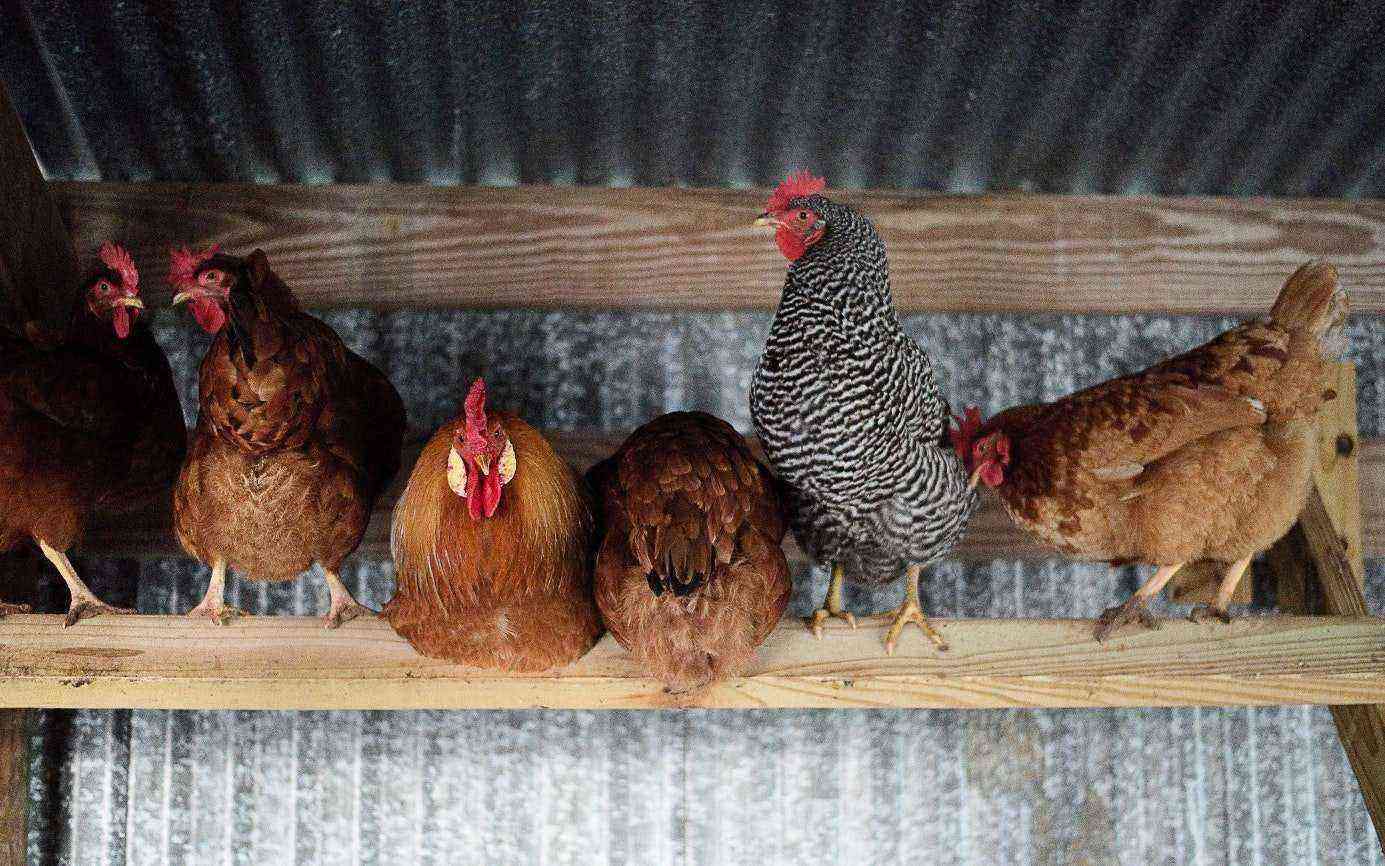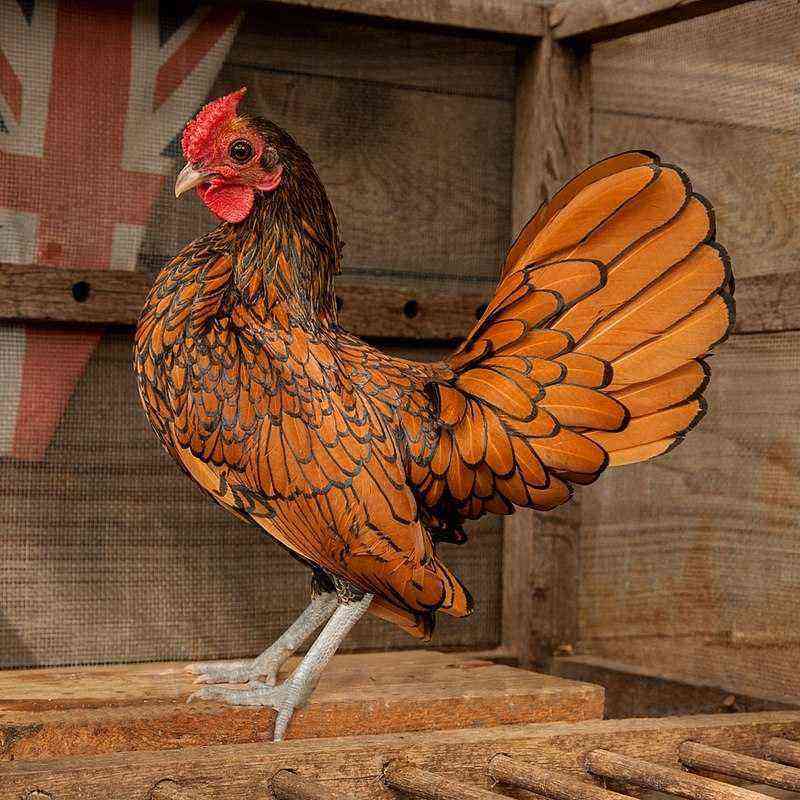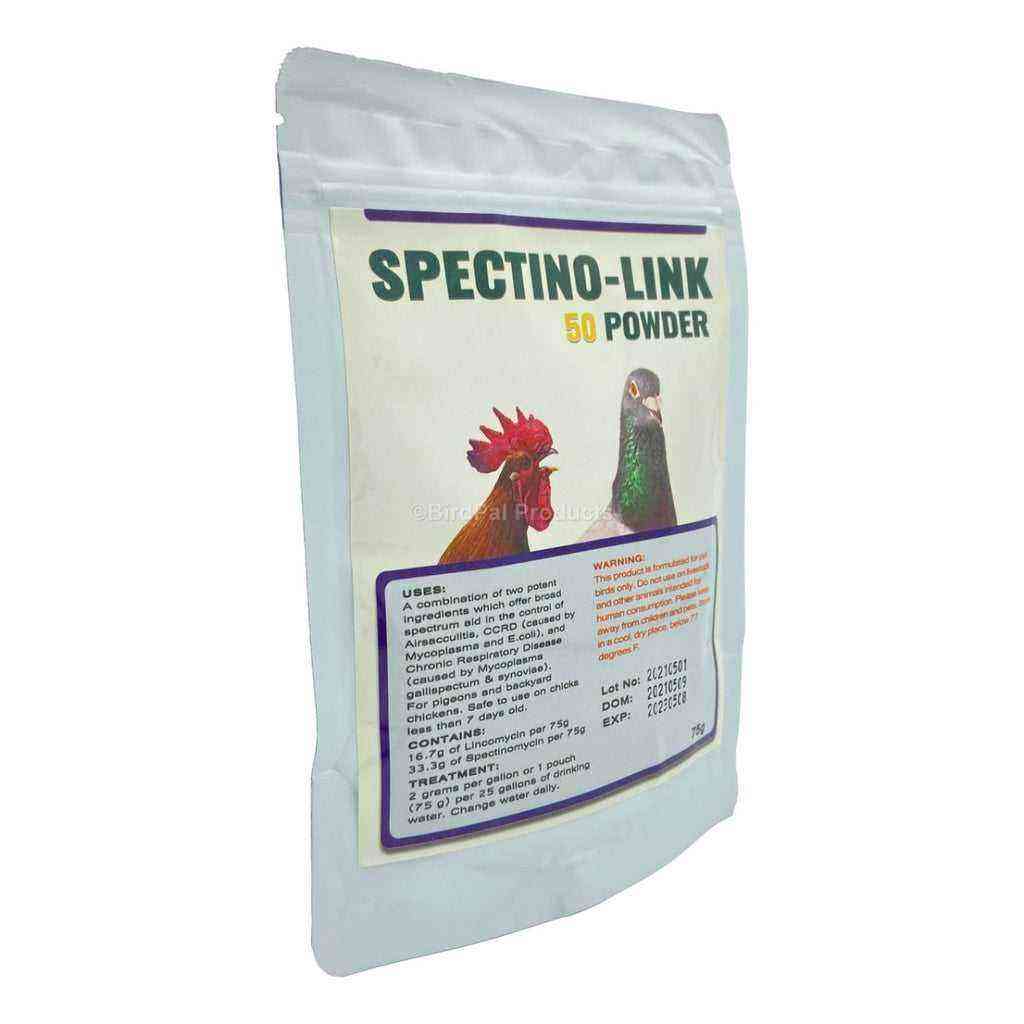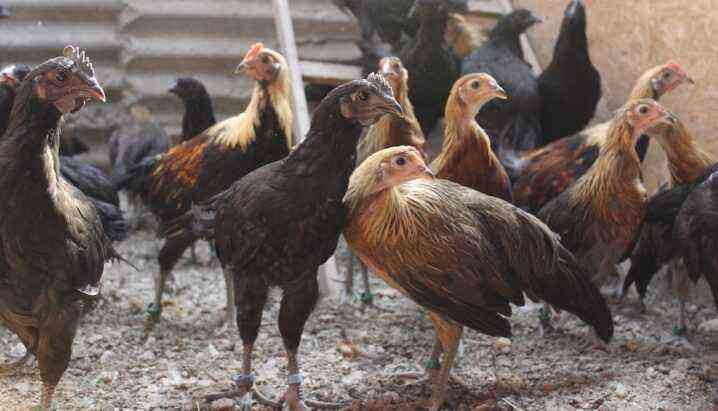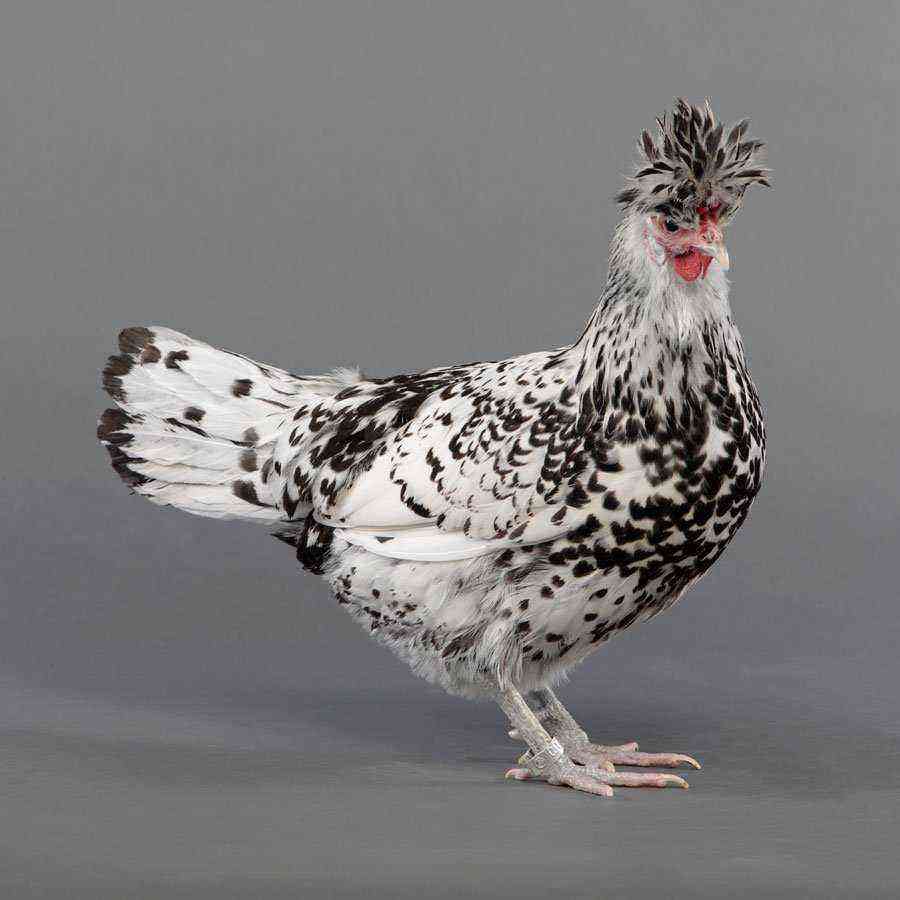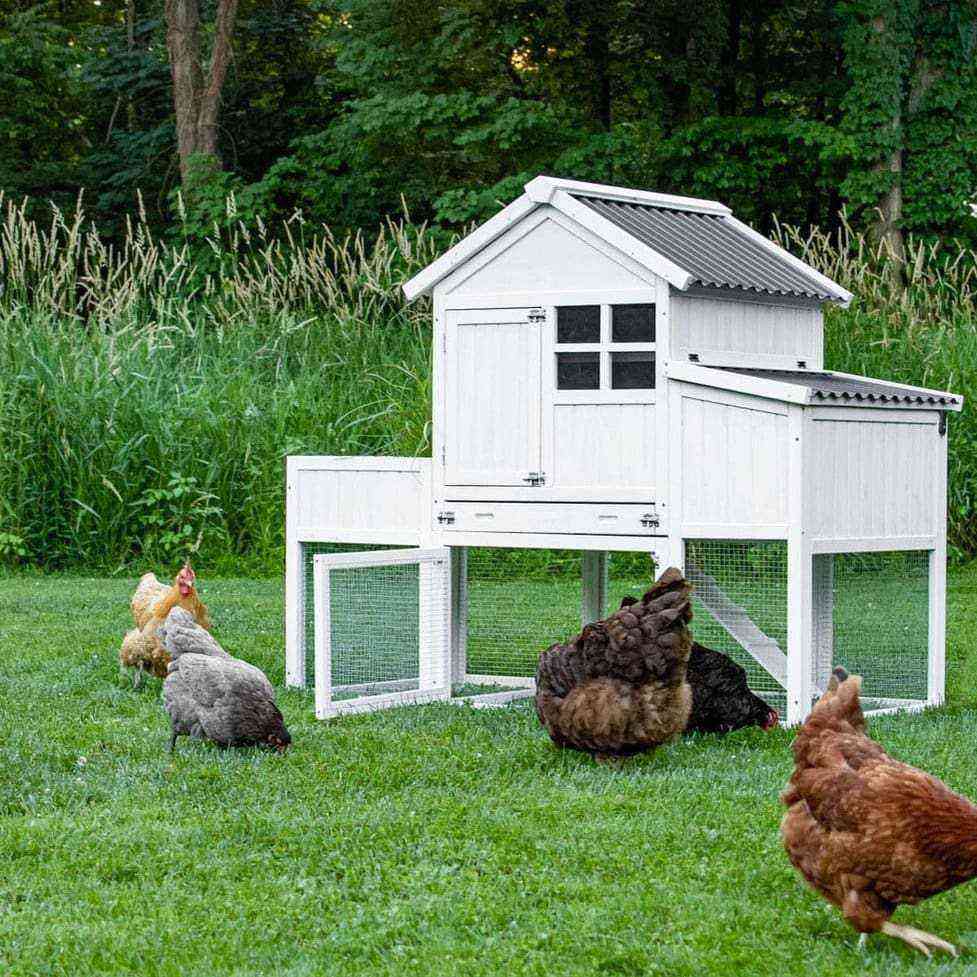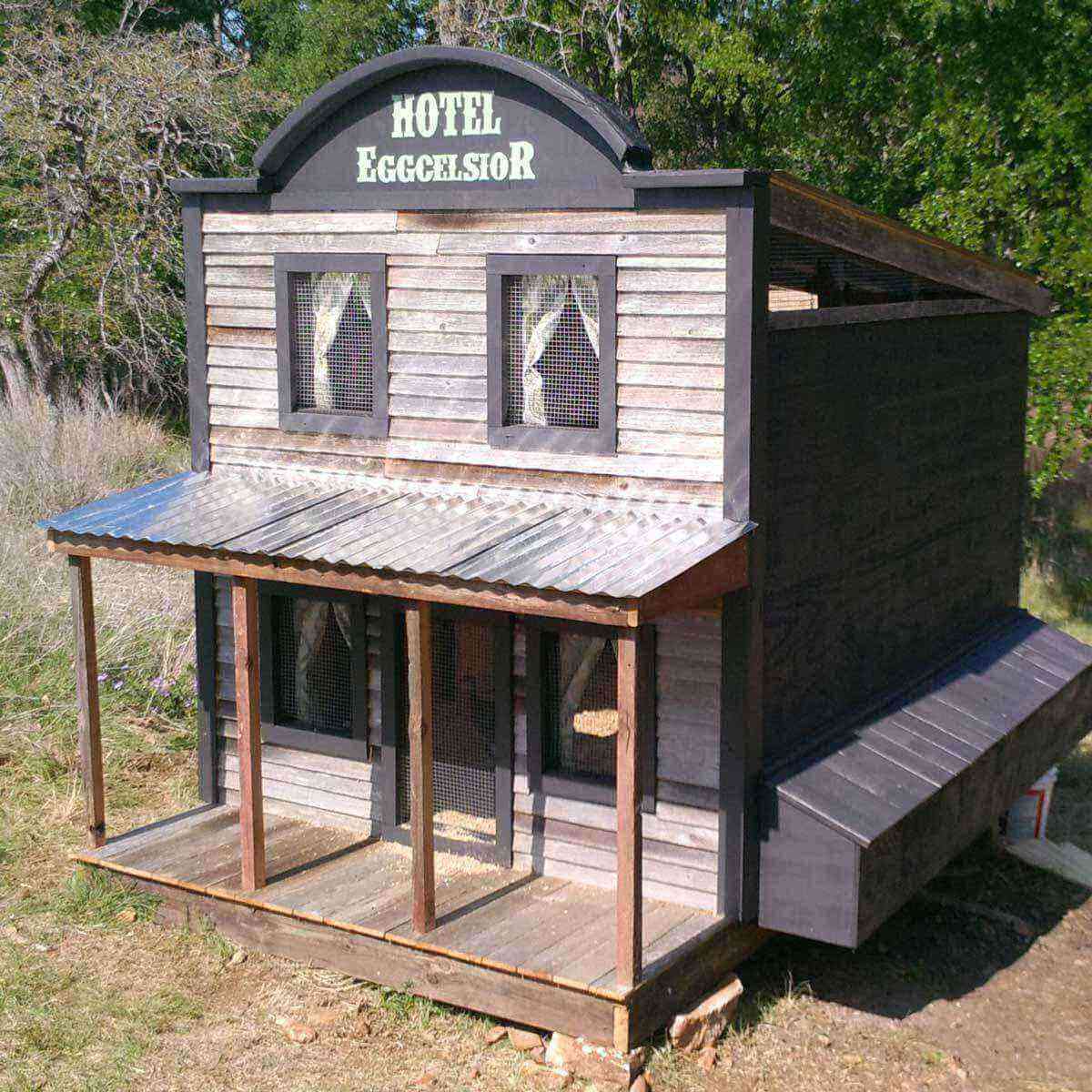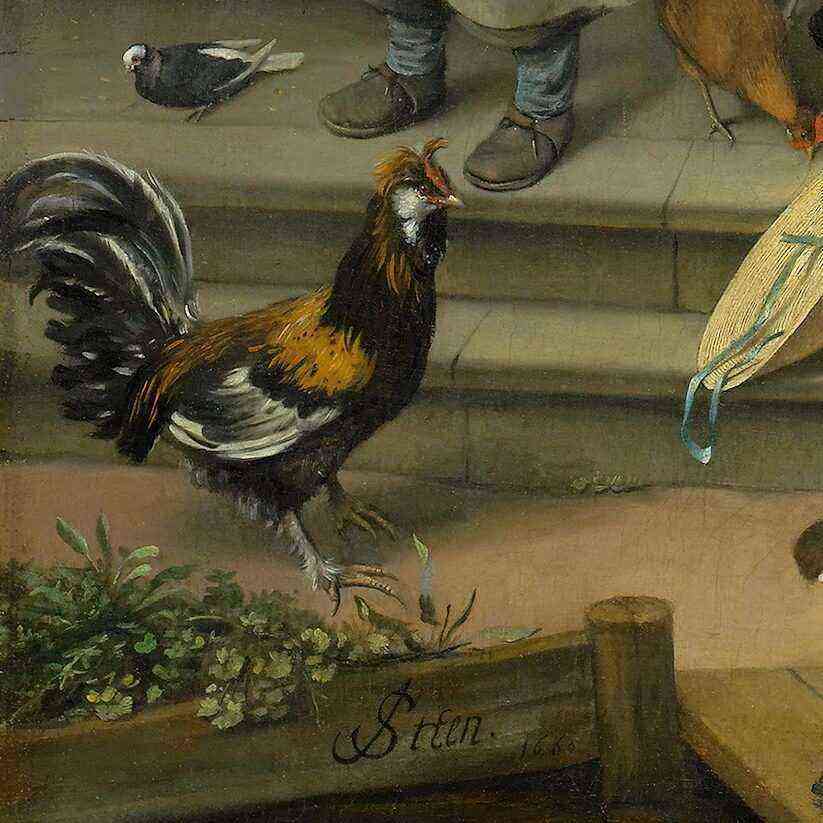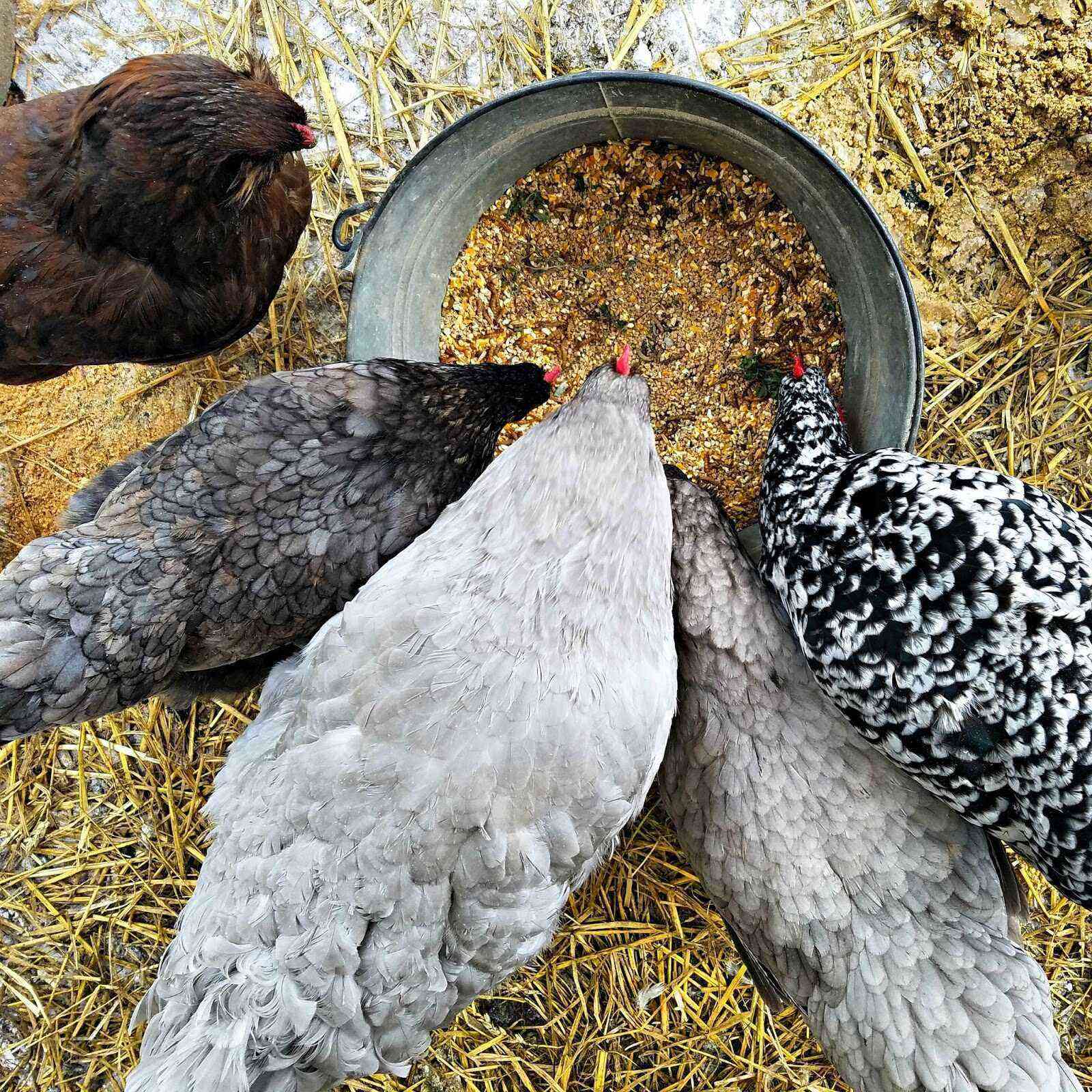Growing poultry, including chickens, is a fairly promising occupation. Especially considering that the cost of their meat in retail chains and even in the markets is steadily going up. But in order not to be disappointed as a result of your efforts, you must carefully prepare for this process.
Building Requirements
You should not be afraid that the work of building a chicken coop will be very difficult and overwhelming, as is sometimes believed for some reason. If there is a suitable set of materials, tools, free space and free time at the ready, no problems should arise. The construction of a chicken coop begins with determining the number of future inhabitants. In order to do everything as clearly and competently as possible, it is worth consulting with those who have already built similar bird houses. Personal experience cannot be replaced by any general instructions.
Thinking through the design of the chicken coop, you need to take into account:
- protection from various kinds of predators;
- draft prevention;
- the possibility of lighting the room in the winter and when cloudy weather sets in;
- creation of high-quality thermal insulation;
- organization of powerful ventilation of the poultry house.
When determining the area, it is necessary to take into account both, in fact, the site for the chicken coop, and the territory where the bird will knead its paws. It is unacceptable to build a corral in a lowland, because there it will constantly get wet from rain and fog. But some elevation will not hurt. But if it is not there or it is impossible to use such a place, a flat area will do. When calculating the required space, it is usually assumed that each 5 layers will need a minimum of 3 square meters. m.
For 3 birds or less, a pen with an area of u1bu2bXNUMX mXNUMX is enough. It is these dimensions that were not chosen by chance, since they allow chickens to fully move. The more mobile these animals, the more eggs you can get. Fenced areas for 5 birds should occupy 6-7 square meters. m. It is desirable to place walking platforms and exits to it from the south.
These sites need to be covered from piercing winds. To prevent rain from falling on the chickens, so that the sun does not burn, you need to equip a canopy. On level ground, the elevation is organized artificially, it is made by pouring sand and gravel. To prevent rodents in their attempts to get to the chicken coop, laying a clay layer mixed with glass fragments on the embankment helps.
From the very beginning, it is worth choosing the best approach to lighting the chicken coop – most often they place a door facing the southeast.
Typical ceiling height is 2-2,2 m. This setting provides the highest total air volume. When the window is located apart from the doors, it is placed at a height of 110-120 cm above the floor. In this case, the overall dimensions will be at least 50×50 cm. In summer, it will be easier to remove eggs if the nests are placed in the outer part of the house, and passages for chickens are prepared in the walls.
Each nest should be at least 40×40 cm. When a frame structure is being built, there is no need for a concrete base. You can limit yourself to an embankment. But in this situation, you will have to raise the building above the surface of the embankment by about 30 cm or more. The vacated gap is covered with a chain-link mesh so that small predators do not penetrate inside.
Types
In addition to the general requirements, you need to understand the types of chicken coops. It is quite simple to equip a portable option, and it is this solution that is best suited for owners of small plots. For the chickens themselves, it is also good, because it allows them to enjoy fresh grass. Most often, a mobile chicken coop is prepared in the form of a multi-tiered structure. The uppermost “floor” is then made of wood, and a mesh is pulled at the bottom, which is equipped with a wooden door.
A more modern version, gradually gaining popularity, is equipped with a roof with natural grass. The natural environment is imitated as efficiently as possible, and the birds are completely covered from the negative effects of the sun. It is recommended to move the house to a new place not at your own discretion, but about once every 4 hours. In addition, mobile structures have a much better view than most conventional bird buildings.
In addition, a portable chicken coop allows you to protect animals from predators, no matter where the chickens are at a particular moment. An additional advantage is the possibility of biological treatment of the beds. Grazing chickens allows you to increase the aeration of the earth. At the same time, a large number of larvae and caterpillars are guaranteed to be exterminated. And the general quality of the soil grows noticeably due to natural fertilization.
But still, most people prefer full-fledged stationary chicken coops. They are divided into summer and winter groups. Inside the premises, designed for keeping poultry in the cold season, not only the warmth of the air, but also its sufficient dryness should be maintained. The best temperature when the bird feels great and brings a lot of eggs is from 15 to 23 degrees. Of course, it should be maintained not at any particular point in time, but around the clock.
Therefore, a real chicken coop for winter is always thoroughly insulated. There should not be the slightest cracks in any surface. It is required to eliminate cold bridges. The winter house needs to be equipped with reliable lighting fixtures. Places for walking birds in the cold season must have a roof and cover themselves from the wind, no matter which direction it blows.
If these requirements for a walking area are met, chickens can be released outside even in fairly severe frosts. As for the buildings that will be used in the summer, there will be no need for such capital buildings.
But the required elements still remain:
- the shed itself;
- places for feeding and drinking with appropriate facilities;
- a separate area where chickens can walk;
- nests;
- perch pole.
Often walks take place exactly under the house itself. In this case, it is raised above the surface of the earth. But wherever there is a paddock, it needs certain lighting and dryness. A bird going out for a walk in a heavily shaded damp area will become ill, or at least lose productivity.
It is best when the selected area is in partial shade, which is created by trees or a special canopy.
If you have to start breeding chickens on a large scale, prefabricated structures based on sandwich blocks are preferable. Such structures are characterized by a modular structure. If required, they can always be increased in a short time. Specially selected materials are not prone to rotting and corrosive processes. On personal plots, small prefabricated models based on high-quality wood turn out to be much more practical.
Projects
The formation of the project begins with the drawing up of drawings and the study of photographs. You can also take ready-made drawings from standard projects. All dimensions and distances must be marked on the drawings; The doors always open into the chicken coop. Cleaning will be much easier.
During the design process, you need to find out how much is required:
- drinker;
- places for feeding;
- perches.
They figure out in advance how to heat the chicken coop, how to light it and provide ventilation. The floors are formed from clay or earth. The base scheme depends solely on how large the load is from above. The design must take into account the insulation material used and its layer.
If necessary, do not deviate from the standard schemes.
Place
Birds do not tolerate noise exposure. Therefore, it is necessary to remove the chicken shed from all its sources as much as possible. Most often, such sources are roads and railways, industrial facilities. As already mentioned, you need to think about the fact that the selected site does not turn out to be a source of dampness. It is advisable to place the aviary in the same place as the poultry house itself.
Doors are oriented to the west or east. But it is allowed to direct windows due to technical reasons strictly to the south. The minimum distance to a residential building should be 3 m. Of course, given the increased sanitary risks, the place where chickens are kept should be moved away from wells and other open water bodies.
And one more thing – you need to provide a convenient approach for yourself in order to use the building without unnecessary difficulties.
dimensions
With all the variety of chicken pen designs, there are quite clear requirements for their selection and use. Thus, structures that are close in shape to a rectangle or exactly correspond to it are oriented from east to west. The usual recommended proportion is 2 hens per square meter. m. If this space is not provided, the collection of eggs is reduced.
It is important to remember that almost always the population will grow over time. And because of this, the need for free space also grows. The required area is highly dependent on which adult birds or broiler chickens are planned to be kept. So, for the egg breed, this figure is 4 adults. And for those who give, along with eggs, also meat – only 3.
In the vast majority of cases, private chicken coops are designed for 20 or 50 heads. 100 chickens or more is very rare in one place. For every 20 hens, a minimum of 5 square meters is allocated. m of the main room, and with a paddock or vestibule, it turns out at least 15 sq. m. Any of the walls is made from a length of 300 cm. It is along it that the nests will be lined up, which are placed in 4 tiers.
A typical 5 nests will take up approximately 240 cm. In addition to this, a distance of about 0,3 m from the perimeter of the tiers to the walls will need to be left. This gap greatly facilitates maintenance and subsequent disinfection. The minimum width of any chicken coop is 150 cm. The recommended dimensions change if a design for 50 heads is considered.
In this embodiment, the area of u15bu2bthe main part of the chicken coop is at least 20 m2. The size of the enclosure is at least 6 m2. Nests are placed along walls at least XNUMX m long. The height of a large farm chicken coop is at least XNUMX m. This is necessary for convenience.
Materials
You can build a chicken coop:
- from polycarbonate (it is used in the roof);
- from a tree;
- from brick;
- from pallets;
- from cinder blocks;
- from shell rock;
- from foam blocks.
Foam concrete is considered one of the best options. Mounting products from it is relatively easy, heat retention does not cause any problems. However, the high cost greatly complicates the use of foam blocks. The greatest savings are achieved through the use of wood. In rural areas, wooden chicken coops are very good and safe, harmoniously fit into the surrounding landscapes.
But the weakness of the tree in this case is the careful implementation of fire safety standards. An intermediate cost option is the use of brick or cinder block. However, brick chicken coops will certainly have to be insulated. The rather wide distribution of pallets is due to their availability and ease of use. Depending on the choice of builders, pallets are disassembled into single parts or used as finished components.
The first option is more flexible, and the second one saves a lot of time. But a full-fledged pallet-based chicken pen will only work as an extension to the main building. Below you will have to build a strong foundation on piles and a frame based on timber. If this rule is not observed, the design is dangerous for birds.
To prevent the destruction of the structure under its own load, special supports are placed inside, which will take the main load.
Pallet-based chicken coops should have a frame and roof made of reliable materials. As a result, the total fee increases markedly. And in any case, you will need to sheathe the structure with boards, thoroughly insulate if you plan to keep the bird all year round. Given the features of the building, all pallets and other wooden structures must be treated with antiseptic mixtures.
A frame chicken coop based on pallets is built:
- knocking together the base and frame;
- forming a gable roof;
- sheathing walls with clapboard or siding panels;
- hanging the door;
- covering the roof.
In most options, pallets for construction purposes with a size of 1,27×2,54 m are used. The roof can be made from a variety of materials, the choice is made individually. It is necessary to focus on the cheapest option, because there is still not much difference in practical characteristics. Returning to the construction of walls, it is worth noting that the shell rock is in no way worse than all of the listed materials. A strip foundation is laid under the structure.
The shell rock itself is used in the form of masonry, which is fastened with a combination of clay and sand. Further, the surface of the walls is plastered with a combination of sand and cement. This coating prevents the clay from leaving the joints. Floors are most often formed from railway sleepers. But in this case, only old parts that are freed from creosote are used.
Cinder block or foam block chicken coops are significantly warmer than those built from logs. In addition, these two materials have excellent fire resistance. Therefore, the reliability of buildings made of foam blocks turns out to be quite decent. It is recommended to use blocks whose brand is at least D400. In the European part of Russia, one concrete element is used, and in the Urals, Siberia and the Far East, laying in a couple of rows is required.
Logs in this case are formed from wood. But saving on the quality of tiles is unacceptable. The fact is that the passage of moisture will devalue all the advantages of foam concrete chicken coops. A mandatory point is the use of foundation waterproofing. It is advisable to glue foam concrete with the help of special cement, which helps prevent freezing.
The classic frame corral is made on the basis of a small section timber. Sheathing of the frame can be made not only with boards, but also with plywood sheets, and other similar materials. Sew up the frame is also required from the inside. Steel mesh helps to avoid the penetration of small rodents into the insulating material. A prerequisite for its selection is the small size of the cells.
When choosing one or another material, it should always be borne in mind that each of them has positive and negative sides. And you can understand this topic deeper if you take into account the features of a particular part of the chicken coop.
The grillage is created from a wooden beam with a section of 200×200 mm or from concrete of the M500 category. Using wood is cheap and easy. However, concrete structures are characterized by increased reliability and durability.
The floor is made in such a way that it matches the type of foundation. Above piles and pillars are most often used:
- edged boards;
- timber;
- cement particle boards.
Concrete floors with reinforcing materials are mounted above the tape-type foundation. As for the selection of materials for walls, the main thing here is adaptation to the size of the building and the technology used. The easiest way is to use timber or oriented slabs. When timber, boards of great thickness (minimum 2,2 cm) are used, they are ideally suited for the preparation of the frame, later sheathed with oriented boards on both sides. There are other materials, designs suitable for main walls.
The already mentioned shell rock is characterized by low thermal conductivity and is excellent for housing 25-30 chickens. A typical element of this kind has a rectangular shape, its size is 18x18x38 cm. The approach to work is approximately the same as that of a cinder block or foam block. The advantage of foam concrete is environmental safety and suitability for the construction of chicken coops of arbitrary size. The classic option for construction is brick, it lasts a long time and passes little heat, but is mainly intended for the construction of capital pens for 50 birds and more.
Whether to use a solid or hollow type of brick is up to the builders themselves. When there is not much experience in poultry farming, it is best to use wooden beams and oriented strand boards. Later, the structure will be dismantled or its boundaries will be expanded, making an extension of a small size. All permanent buildings, with rare exceptions, are made of brick and foam blocks.
As for insulation, it is used for:
- expanded clay;
- sawdust;
- dried hay.
These three options are the cheapest and most available. But there is also a significant difference. So, expanded clay is needed to form thermal protection in the ceiling and floor, and hay and sawdust are used to keep heat in the walls. From synthetic materials, foam is often recommended, which is characterized by reduced thermal conductivity. In this regard, he is far ahead of the already painted “natural trinity”.
Styrofoam is also superior in quality to mineral wool and brick. It is supplied as plates of various sizes. They can be easily installed on ceilings and walls.
To prevent the aggression of rodents, it is necessary to sheathe the walls insulated with foam plastic with protective plates. Another option is mineral wool; it is slightly worse than polystyrene, but is of no interest to mice and rats.
Cotton insulating layers are often supplemented with membranes with reflective properties. These elements allow to achieve increased protection against heat loss by radiation. Another option is Stizol. Such material is covered with a metal layer, thanks to which it saves heat better.
Stizol:
- resistant to water;
- mechanically strong;
- performed with various types of front shell.
Extruded polystyrene foam also deserved a no less positive assessment from professionals. It is characterized by a closed structure, which is created by cells made of expanded polystyrene. The operational properties and the period of its use are quite decent, as are the environmental characteristics. In terms of its properties, XPS boards are clearly better than mineral wool, foam plastic and other insulating elements.
When choosing an insulating material, attention should be paid to its price: even the best options, if they are too expensive, deprive the chicken coop of any meaning. In small structures, products based on polyethylene foam are used. The best choice among them is stizol. But when it is planned to settle fifty chickens or more, it is required to use special combinations. They allow you to save money by using only such material in each place, which is characterized by a balanced ratio of quality and price.
Building
The approach to building a chicken coop is very different depending on how it will be used. Structures that will remain empty in winter should be supplemented with wheels. Such an impromptu trailer is easy to move to where it is really needed. As for geometry, the simplest chicken pens can be made in the form of a triangle or a semicircle. Already on the original drawing, it should be marked where all the windows will be located, and it is unreasonable to deviate from these decisions in the future.
Foundation
Consider step-by-step instructions for building a frame chicken coop with your own hands. This is the most practical option compared to ordering construction services or purchasing a finished product. Anyone who has at least minimal skills in carpentry and carpentry will be able to perform the necessary work. Log cabins and boxes made of foam blocks are built much more difficult.
To properly build a foundation, you need to consider:
- how strong floods can be;
- Is groundwater high?
- direction of rainwater movement.
If the ground is very saturated with water, you will have to use bored piles or piles made of wood. The pile view of the support must also be made in the case when the aviary is located below the main room. The topography of the area is also taken into account. On loam, the solution is simpler – it is required to organize the drainage of liquid over the surface, as well as mount the pillars. The marking of the site is carried out using the building level, tape measure and special cords.
The standard breakdown grid is 100×100 cm. At the nodal points, fertile soil is removed and miniature pits are dug with sides of 300×400 mm. Such notches are needed so that the pillars can be cast. Crushed stone and sand are poured into the base of the pits. Once this is done, it is necessary to mount the formwork.
It is required to do it in the form of a box of plastic lining. The laid product is poured on top with a concrete solution. A stud or anchor bolt is inserted from above. These parts allow you to fix the strapping under the frame. When 24 hours have passed, the formwork must be removed and work on the walls should begin.
It is necessary to tie the pillar foundation with a beam of 9×7 cm. These products are laid out on poles installed along the perimeter, the connection is made by the method of locking the insert “in half a tree”. In any case, it is required to strengthen the joints with metal overlays. According to a similar technique, transverse laying beams are mounted. At the bottom, the timber strapping is sheathed with clapboard, and thick polyethylene is additionally used for flooring.
When choosing a pillar foundation, the main supports are mounted along the outer boundary of the building. The choice of concrete mortar or foam blocks for construction depends on personal preferences. Mounting pile foundations is impractical. All the same, such elements are needed for a heaving and easily shifted type of soil. It is strongly not recommended to build chicken coops in such places.
If, nevertheless, there is no other choice for some reason, you should choose not wooden, but steel piles.
Even the most durable wood, impregnated with special compounds, frankly “passes” in front of high humidity. And the probability that the earth will become wet is quite high, and sooner or later it will inevitably come. The combined base, in which, along with piles, a grillage is used, allows you to build a foam block chicken coop. If reliability is critical, there are no options – only high-quality M500 concrete tape.
Walls
It is the construction of vertical supports that is considered the most difficult moment of construction work. First of all, corner supports are mounted. In this case, a beam of increased thickness is used – 7×7 or 7×9 cm. The supports from below are attached with self-tapping screws to the strapping from the beam. Next, you need to align the structure and secure using struts.
When the placement of the racks is completed, apply the horizontal strapping in the center. It is made from boards or timber of small size. A beam is used to tie the heads of the supports. It additionally acts as a Mauerlat under a gable roof.
The intersections of the parts of the beam at the corners need to be made stronger using:
- corners;
- steel superimposed plates;
- metal staples.
When the frame is assembled, its parts are connected using self-tapping screws, the length of which is 7 and 12 cm (according to the specific situation). All nodes used for docking must be supplemented with corners or a steel profile plate. The fixing itself is carried out using self-tapping screws for joinery, the length of which is 2,5-3 cm. Their goal is to increase the rigidity of the entire room.
An additional function of the jumpers is the reliable retention of the insulating material and the vapor barrier. Walls and ceilings are covered with clapboard made of wood from the outside. If funds are available, moisture-resistant varieties of oriented slabs can be used. Professionals do not see real differences between them. This completes the work on arranging the walls.
Sometimes the walls are assembled separately. When they are ready, these elements are immediately mounted. In each wall, it is necessary to prepare holes for doors, windows and a box for collecting eggs. Having formed the openings, it is necessary to fold the blanks and align them strictly according to the markup. It is required to knock down the walls so that there are no slightest distortions.
Roof
The formation of truss complexes is easiest at the bottom, where there is more room for work and all parts are accessible. They begin work by cutting out 5 or 6 pairs of rafter legs. Next, you will need a well-thought-out template, according to which these structures are connected into arches of a triangular configuration. As soon as a separate arch is ready, it is raised to the desired position. Installation naturally comes from the front elements, they are attached to the frame of the rafters (temporarily) using plank fasteners.
Therefore, it is necessary to carefully align the roof structure. Only after making sure that the given configuration is correct, use a ridge beam and struts to fix it. Then comes the turn of the installation of the crate. The last step is the formation of a water barrier from the roofing material and the decking of the front roofing. It is standard practice to cover the gables with quality clapboard.
Given the inevitable contact of the roof with atmospheric moisture and precipitation, it is necessary to treat everything with antiseptic preparations. Additionally, fire retardant treatment is carried out. These substances can create bad odors. Therefore, before “settlement” there, the birds wait until the chicken coop is thoroughly dry in the sun. Hot rays will quickly remove all harmful components from it.
Gender
The construction of floors in chicken coops should be given special attention. It is no secret that they are subjected to constant merciless influence. Therefore, it is necessary to use only reliable materials and provide a well-functioning sewer. You can minimize the escape of heat through the floor if you sprinkle it with sawdust and shavings. You also need to think in advance how to ensure a complete cleaning.
It is advisable to arrange the floor with boards 5 cm thick. The flooring is made in 2 layers, which are separated by a heater. The beam should have a section of 100×100 mm. The exception is the lowest plank, which is 2,6 cm thick. It is very important to level the surface and clean it using a planer.
At the base, you need to make a rectangular recess. She will let the chickens in and out. Further movement takes place along an inclined ramp, which must be agreed upon. It is imperative to protect the tree with a special mixture or lime, after which a high-density litter is laid out. The cover layer is often formed from straw, crushed peat and sawdust with a total thickness of 50 mm.
How to heat?
This question is very important if you plan to get eggs and meat all year round. In any case, it is irrational to use conventional ovens; this entails significant costs. A prerequisite for success is wall cladding with thick layers of insulating materials. Thanks to them, in winter, it is possible to withstand temperatures of at least 15 degrees Celsius. Another important requirement is the use of additional frames in winter.
But all these moments, as well as covering the attic floor with straw, only protect the already existing heat. They cannot increase its quantity, and special tricks help to solve this problem. Heaters are best mounted on the ceiling above the perch. After all, it is in this place that chickens gather most of all in the cold months. Special heaters are used when the walls are made of bricks or concrete blocks.
To fully warm a large chicken coop all year round, you need to use several tricks. The roof is made in two layers. Structures made from logs are thoroughly caulked. Additional heating is carried out using powerful lamps or heaters. The choice between them is largely determined by personal preferences.
Heaters for the chicken coop are mainly chosen oil, infrared or in the form of film-coated plates. Fastening in the same way is done on the ceiling. All other options can be considered only when the above schemes cannot be applied. Ceramic heating panels are similar to convectors, but the movement of air is already forced. That is why high power fans have to be used.
With the help of a heater that runs on electricity, it will not be difficult to warm up the chicken coop in a matter of minutes. But there are also problems: both the system itself and the energy source are expensive. In addition, all installation work must be carried out very carefully, taking into account the requirements for electrical safety. It is also bad that the air becomes too dry. And one more thing – heaters, even their best models, are very noisy.
Oil heaters are much safer in terms of fire and use little energy. Such a system lasts much longer than a heater, and does not irritate the layers with extraneous sounds. Drying out of the air and the appearance of bad odors are excluded.
However, there are also serious weaknesses:
- the chicken coop will warm up only for a long time, in addition, unevenly;
- there is a risk of oil ejection;
- the heating device is characterized by a large mass and minimal mobility.
The convector uses the effect of convection and works due to the action of the heating element, therefore there is no need for additional elements that supply heat. Difficulties may be due to the fact that electrical energy does not arrive everywhere without interruptions.
It is also worth considering that it is not always possible to get by with one heater. And if the device is turned off, the air will cool down in a short time.
Rules for interior design
The hole that the birds will use is usually placed on the south side of the shelter. Its width is from 3 cm. The height must be at least 4 cm. It is allowed to combine the manhole with the front door. Then it is cut out at the very bottom of the opening.
Means that provide birds with food are prepared with their own hands or bought. Bunker-type feeders are made from pipes in which holes are prepared throughout. Such products should be mounted 150-200 mm from the floor. In this case, the bird does not have to rummage through the grain and scatter it around. But when the feeder is on the floor, it can provoke the accumulation of dampness.
Feeding structures are made of wooden slats or plastic containers. Experienced farmers use containers with sides from 20 mm high. In addition to this, a reservoir for sand or shell rock is formed. The hens will continuously peck at the mixture. They need this to better digest food.
The seeming simplicity of arranging perches is deceptive. For their production, a bar with dimensions of 0,2×0,2 m is used. If a round profile is used, its cross section is most often 28 mm and the length is 220 mm. Thinking over the arrangement of nests and putting the idea into practice, we must not forget that one bird needs 300-350 mm of space. Regardless of the breed of the animal, the height should be in the corridor from 50 to 70 cm.
Where exactly to put a perch is impossible to decide in advance and for all occasions. Only the builders themselves know where there is sufficient free space. But for the sake of saving electricity and the health of the birds themselves, it is required to prefer areas near windows.
As for the supports, most often these are boards 0,5 m long, fixed on opposite walls of the chicken coop. You will have to install a pole, so you need to saw through recesses of 30×30 mm.
It is mechanically impractical to count on a simple adjoining of the pole. Be sure to attach it with nails or screws. The distance between individual perches should not be less than 0,25 and more than 0,3 m. Further, although the chickens are winged, it will be easier for them to climb the perch by mounting a small board ladder. In order not to be mistaken, it is required to measure the required distance in advance.
The optimal type of nest is based on a partially open box. It is made of timber and sheathed on the outside with oriented strand boards. First of all, a frame is prepared, for which a beam of 2×2 cm is used. To tie the workpieces together, it is recommended to take 3 cm self-tapping screws and steel corners. All nests that will be raised up must be equipped with legs from below.
A spacious nest is considered if it has a depth of 0,4 m. At the same time, the height and width are at least 0,3 m. You should definitely lay out this “chicken cell” with a special litter. It should be as soft as possible so that the bird feels comfortable and calm. Most often, each nest counts on 4 chickens.
All poles and other wooden parts of structures must be secured. Be sure to remove with a planer all deviations from the round shape. Any workpiece must be sanded using sandpaper. Even the slightest burrs are categorically unacceptable. To make the job easier, it is recommended to use shovel handles.
It is not so difficult to select ready-made feeders in specialized stores. However, not all of them are equally valuable. The best options, judging by the experience of a large number of people, are those equipped with a separating net. Chickens will only be able to put their head inside and not rake out the grain.
As for homemade feeders, it is recommended to give preference to polymer sewer pipes, which are placed in a row along the wall.
The chicken, having eaten, also needs to drink. Some poultry farmers use improvised drinking bowls from old pots and other unnecessary containers. There seems to be nothing wrong with this, but you will need to change the water very often. After all, the drinker will be constantly clogged with droppings. There are two ways out – buy the desired product in the store or make it yourself from plastic bottles.
The ubiquitous droppings and other contaminants are an integral part of bird life. But the chickens want to get rid of the dirt. And so you need to prepare special baths. Ashes are laid there, in which the birds will bathe. Such an adaptation guarantees, among other things, reliable protection against parasitic organisms.
Ventilation
The device for natural ventilation (as well as lighting) is provided by doors and windows. However, constantly opening openings, thereby creating drafts, is very harmful to birds. Therefore, special designs are used. To ventilate the chicken coop through the draft means to put an exhaust pipe raised above the roof. The inflow pipe is placed in the opposite corner at a height of 200-300 mm above the floor; due to the natural course of the air, this solution reduces the humidity in the room.
Two ventilation ducts distributed in space are the best solution that has been worked out for many decades. Ventilation openings are preferably prepared in the form of a square. To get them, it is recommended to use an electric jigsaw. Usually, the second (outlet) holes are sawn through with the same size as the inlet, but 400 mm lower.
Given the significant intensity of the bad smell in the room where the chickens are kept, it is advisable to use special fans.
Lighting
Lighting plays a big role in increasing the number of eggs. In the summer this circumstance is not too important. However, most of the year in Russia is characterized by short daylight hours. Therefore, it is necessary to bring its duration artificially up to 14 hours per day. As soon as the time of active molting comes, this time decreases to 9 hours.
It is advisable to use lamps with a current consumption of 50 or 60 watts. Such lamps are placed on top of the feeders. Sockets are supposed to be removed in a sealed shield. The best fixtures are red or with fluorescent light sources. The generally accepted consumption rate is 5 W per 1 sq. m.
The advantage of red lamps is that they do not dry out the air: only those areas where the rays hit will heat up. But still there are more perfect elements – strips based on LEDs. They are much more economical and look more attractive – this is very important for the own mood of the owners of the chicken coop. Of course, you can combine all this: install a couple of fluorescent light bulbs and place a tape with a white backlight tone. The electrical wiring must be mounted in a plastic corrugation, and the electricity itself is supplied through a copper cable line.
Beautiful examples
The modern chicken coop is not just a utilitarian product, it must be elegant. Only careful fitting into the design allows you to avoid emotional inconvenience. The photo below shows a small wooden chicken coop with a gable green roof. Attractive alternation of raised wooden parts and depressions makes the appearance more original. And even the windows were not simple, but divided crosswise into 4 parts.
And here is a more classic and balanced solution. The developers were clearly inspired by pastoral landscapes, rural houses. Therefore, they preferred the characteristic style of the entrance, walls, roofing made of metal tiles. The colors were chosen as calm as possible, even an imitation of a chimney was created. The part reserved for the aviary is fenced with a net.
A simpler option – with two rectangular windows on the facade. The roof is raised above the wall, so this solution is more likely to be considered suitable for summer. The top with one slope is directed back, which facilitates the outflow of rainwater.
Noteworthy is such an original approach – a chicken coop, complemented by a ladder. The size allows us to say that this is a structure for a small number of birds.
How to make a chicken coop for 20 chickens with your own hands, see the next video.
